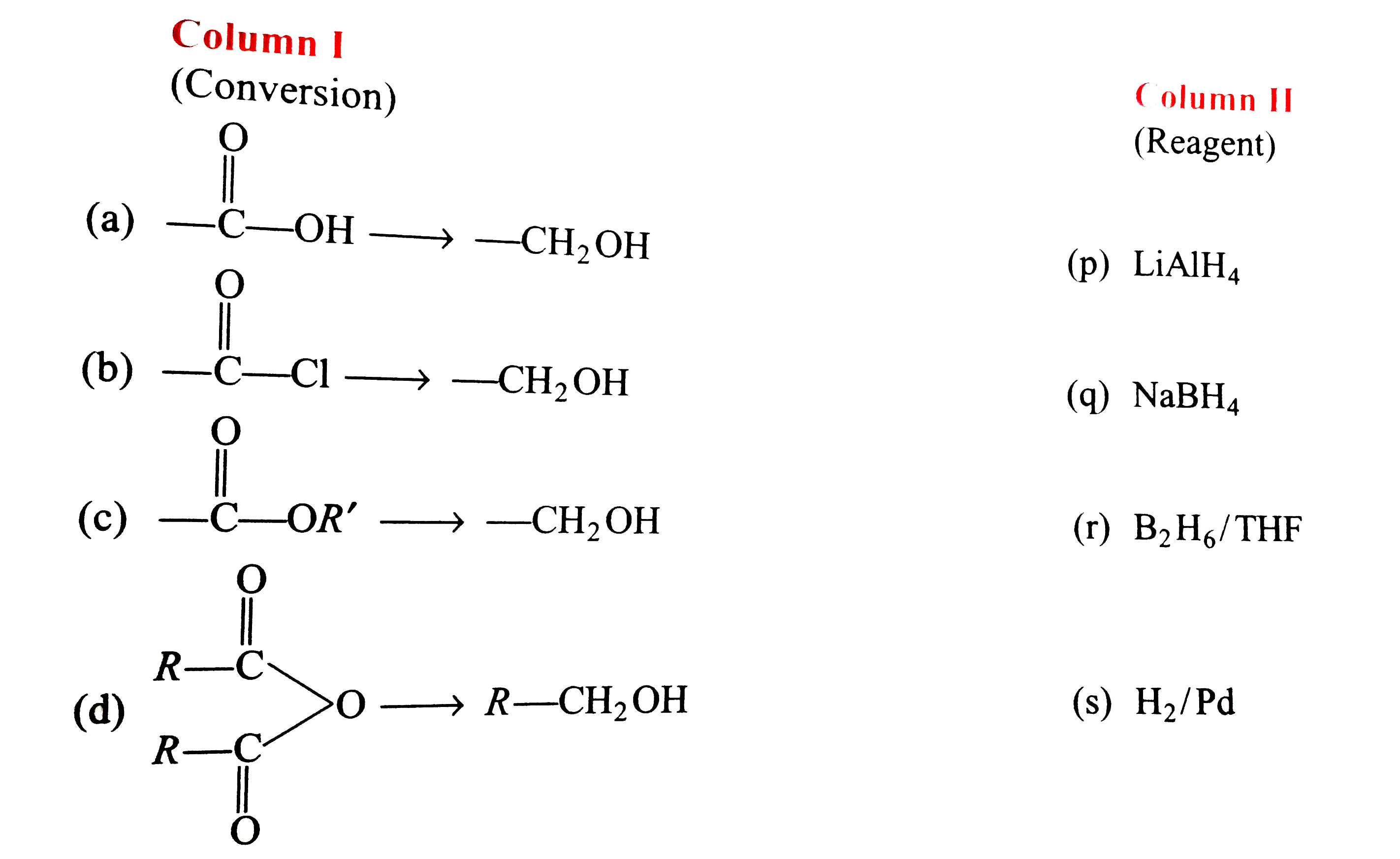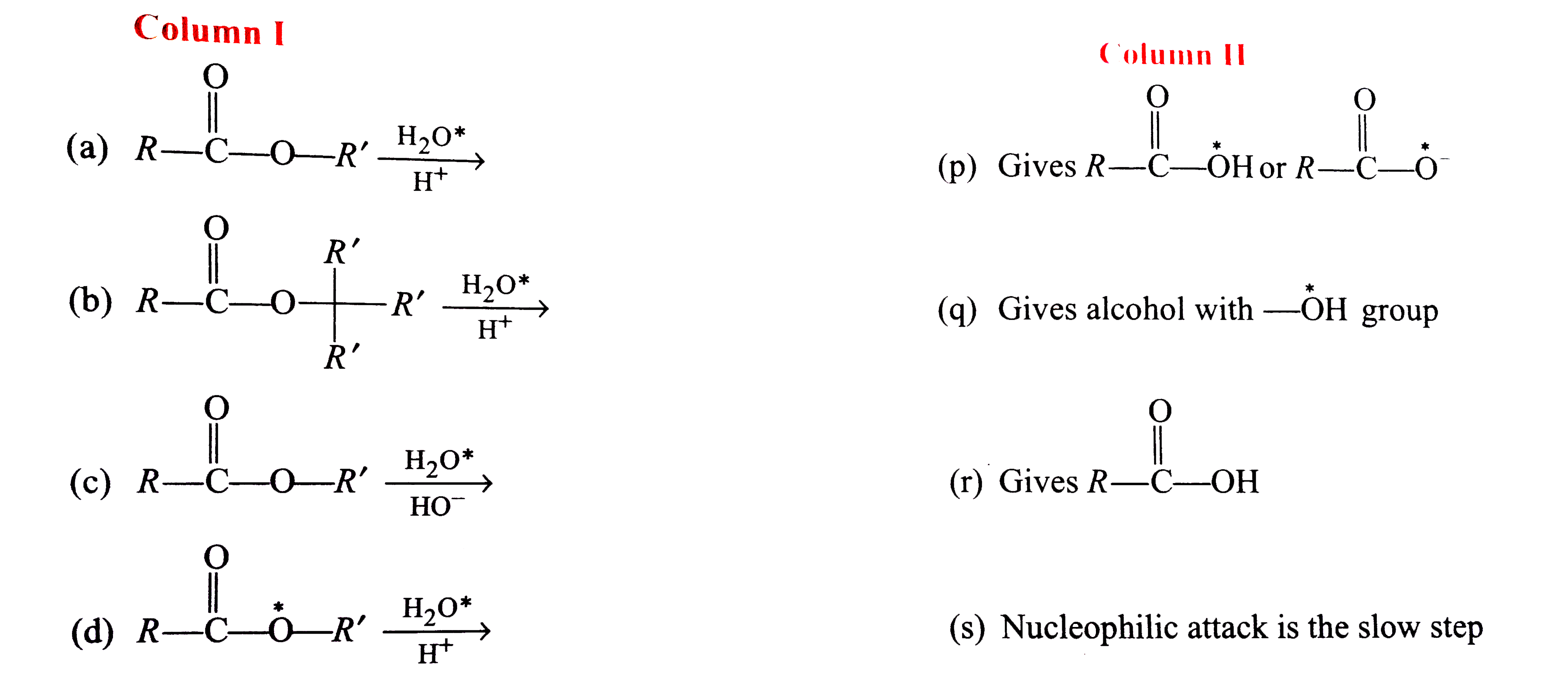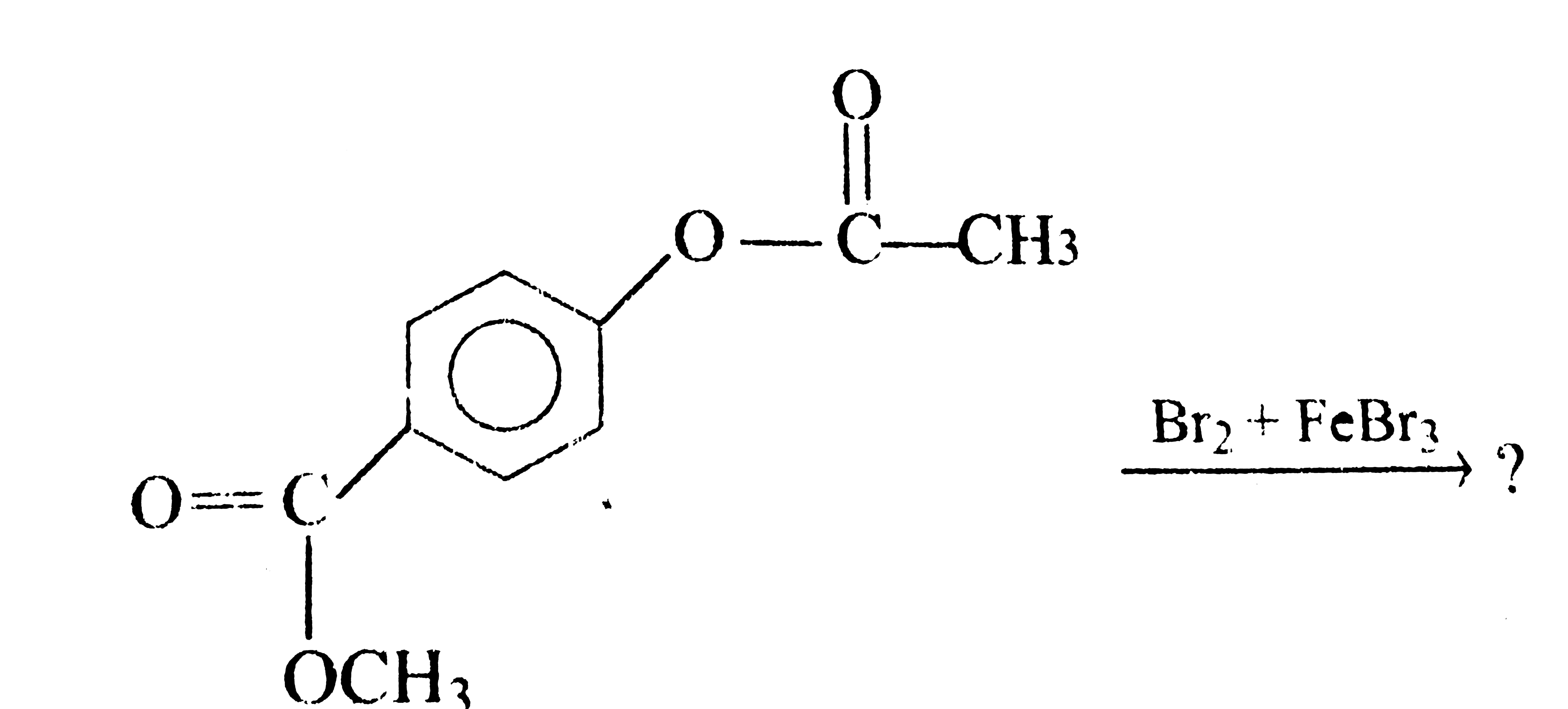Objective questions from G.R. BATHLA & SONS CHEMISTRY Chapter 5 CARBOXYLIC ACIDS AND THEIR DERIVATIVES for Class 12
| Class 12 | CHEMISTRY |
| Chapter | CARBOXYLIC ACIDS AND THEIR DERIVATIVES |
| G.R. BATHLA & SONS CHEMISTRY | Objective questions |
| Medium | English |
| Academic Year | 2023-2024 |
Question 71
An organic acid 'A' (C5H10O2)reacts with Br2 in presence of phosphorus to produce a resolvable compound, which on dehydrobromination gives an unsaturated acid. The unsaturated acid does not show geometrical isomerism and decarboxylation gives alkene. Alkene on ozonolysis on gives two compounds, one gives positive Schiff's test while the other does not. The organic compound A is :View SolutionQuestion 179
4-Nitrotoluene is treated with bromine to get a cornpound 'P'. 'P' is reduced with Sn and HCl to get compound 'Q ' .'Q' is diazotised and the product ,is treated with Phosphini, acid to get a compound 'R' . R is oxidised with alkalin KMnO4 to get compound 'S'. Compound 'S' is : View SolutionQuestion 441
Dicarboxylic acids have carboxylic groups e.g.
HOOC-COOH,oxalic acid
HOOC−CH2−COOH-Maloic acid
HOOC-(CH2)3-COOH-Glutaric acid
HOOC,(CH2)4-COOH,-Adipic acid
Acidity of dicarboxylic acids depends upon the stabillity of intermediate ion and upon the distance between two carboxylic groups. shorter the distance between two carboxylic groups, greater is the acididc character. Melting point of the acids depends on the symmetry. greater the symmetry, higher will be the mp. Dicarboxylic acids on heating give monocarboxylic acid, alkanes, cyclic ketones dependings on the conditions.
Which of the following is the most acidic ? View SolutionQuestion 442
Dicarboxylic acids have carboxylic groups e.g.
HOOC-COOH,oxalic acid
HOOC−CH2−COOH-Maloic acid
HOOC-(CH2)3-COOH-Glutaric acid
HOOC,(CH2)4-COOH,-Adipic acid
Acidity of dicarboxylic acids depends upon the stabillity of intermediate ion and upon the distance between two carboxylic groups. shorter the distance between two carboxylic groups, greater is the acididc character. Melting point of the acids depends on the symmetry. greater the symmetry, higher will be the mp. Dicarboxylic acids on heating give monocarboxylic acid, alkanes, cyclic ketones dependings on the conditions.
Which of the following dicarboxylic acid is used in the manufactures of nylon-6,6? View SolutionQuestion 443
Dicarboxylic acids have two carboxylic groups, e.g.,
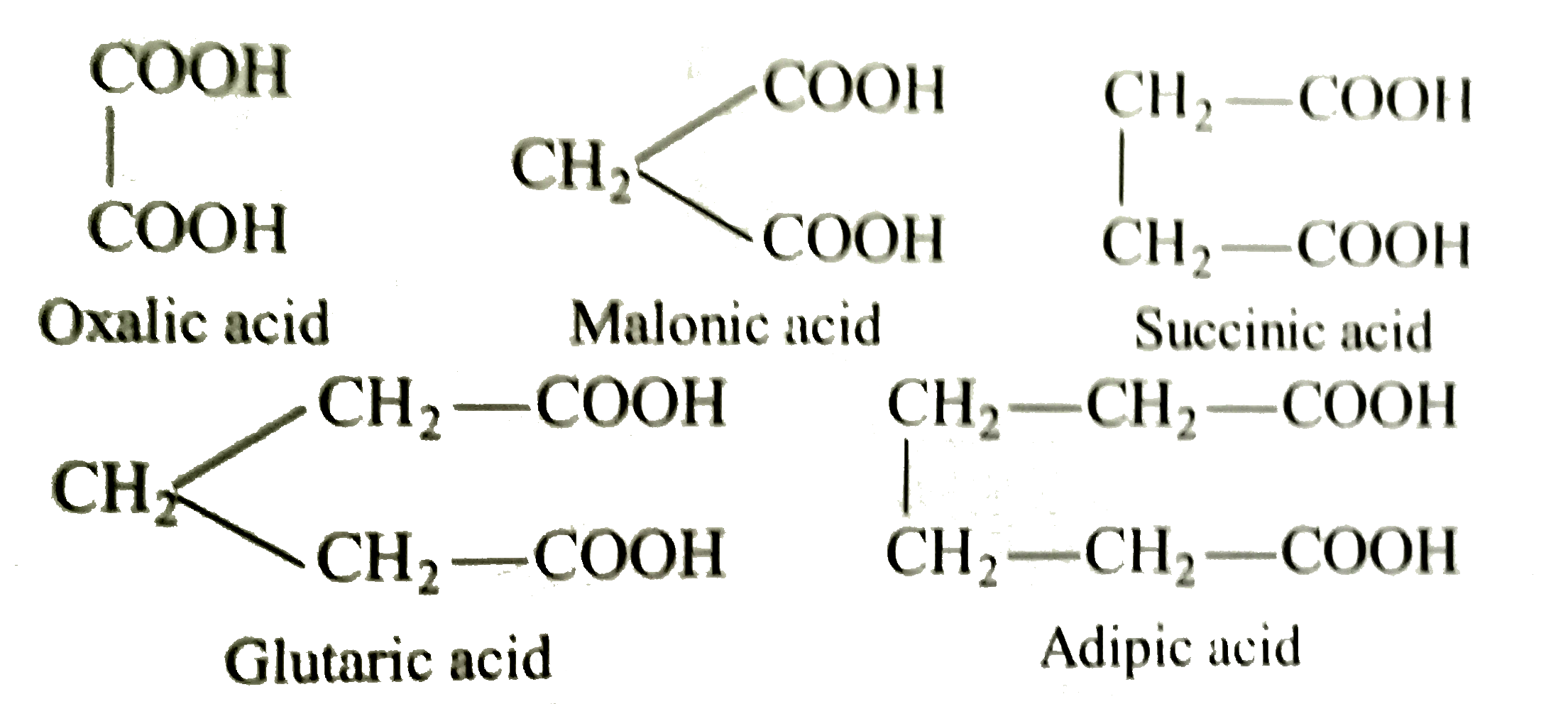
Acidity of dicarboxylic acid depends upon the stability of intermediate ion and upon the distance between two carboxylic groups. Shorter the distance between two carboxylic groups, greater is the acidic character. Melting point of these acids depends on the symmetry. Greater the symmetry, higher will be the melting point.
Dicarboxylic acids on heating give monocarboxylic acid allkanes, cyclic ketones depending on the conditions
Which of the following has highest melting point? View SolutionQuestion 444
Dicarboxylic acids have two carboxylic groups, e.g.,
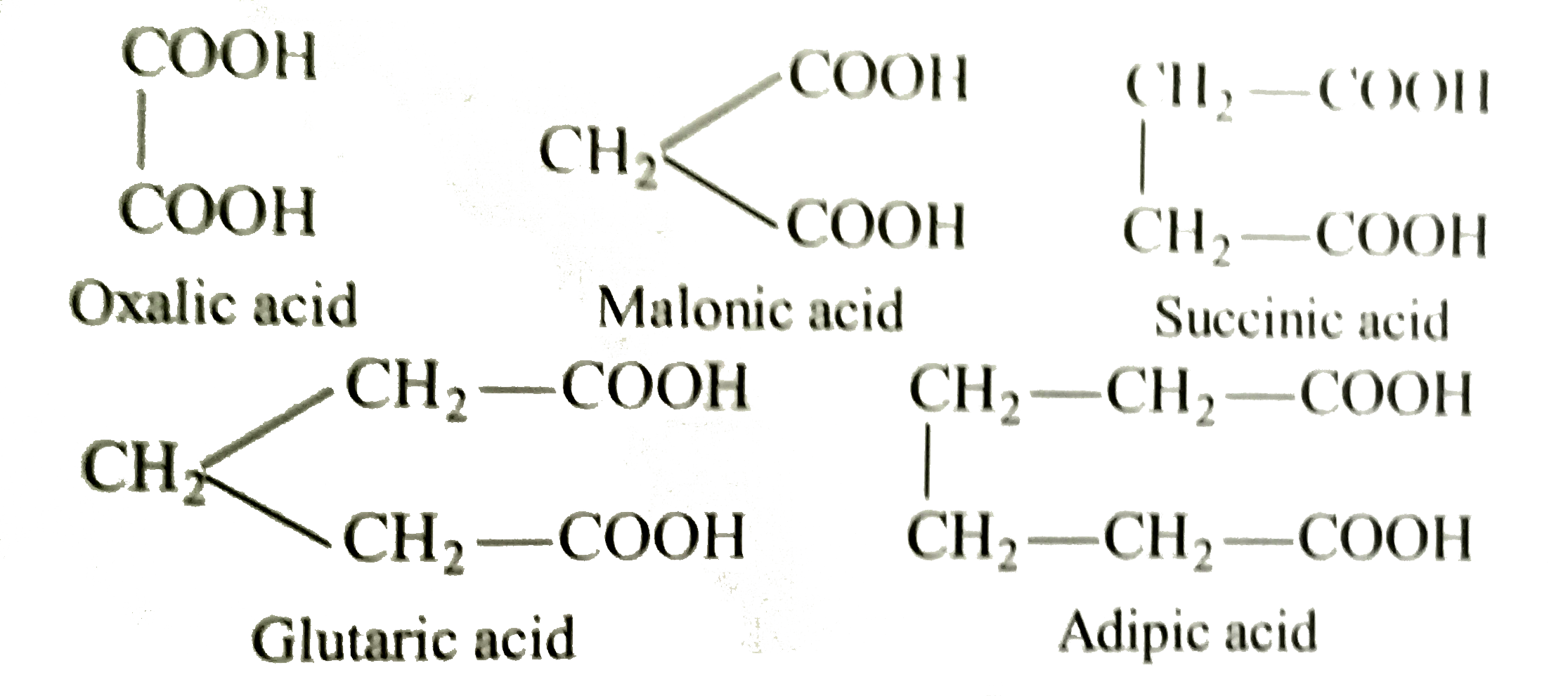
Acidity of dicarboxylic acid depends upon the stability of intermediate ion and upon the distance between two carboxylic groups. Shorter the distance between two carboxylic groups, greater is the acidic character. Melting point of these acids depends on the symmetry. Greater the symmetry, higher will be the melting point.
Dicarboxylic acids on heating give monocarboxylic acid allkanes, cyclic ketones depending on the conditions
Which of the following dicarboxylic acids, will give monocarboxylic acid on heating ? View SolutionQuestion 445
Dicarboxylic acids have carboxylic groups e.g.
HOOC-COOH,oxalic acid
HOOC−CH2−COOH-Maloic acid
HOOC-(CH2)3-COOH-Glutaric acid
HOOC,(CH2)4-COOH,-Adipic acid
Acidity of dicarboxylic acids depends upon the stabillity of intermediate ion and upon the distance between two carboxylic groups. shorter the distance between two carboxylic groups, greater is the acididc character. Melting point of the acids depends on the symmetry. greater the symmetry, higher will be the mp. Dicarboxylic acids on heating give monocarboxylic acid, alkanes, cyclic ketones dependings on the conditions.
Sodium adipate on electrolysis gives : View SolutionQuestion 446
Carboxylic acids having at least one α-hydrogen react with Cl2 or Br2 in the presence of phosphorous to give α-halo acids. The reaction is known as Hell -volhar-Zelinsky reaction (HVZ reaction).
R−CH2−COOHP/Br2−−−→ΔR−CH(Br)COOH
The HVZ reaction is limited to the formation of α-chloro and α-bromo acids and it is sometimes backward to carry out. the reagents (X2 and P) are noxious and the reaction time is often long and the conditions of reaction are harsh.
Which of the following carboxylic acids will not give HVZ reaction ? View SolutionQuestion 447
Carboxylic acids having at least one α-hydrogen react with Cl2 or Br2 in the presence of phosphorous to give α-halo acids. The reaction is known as Hell -volhar-Zelinsky reaction (HVZ reaction).
R−CH2−COOHP/Br2−−−→ΔR−CH(Br)COOH
The HVZ reaction is limited to the formation of α-chloro and α-bromo acids and it is sometimes backward to carry out. the reagents (X2 and P) are noxious and the reaction time is often long and the conditions of reaction are harsh.
Which of the following will be obtained when acetic acid is subjected to HVZ reaction ? View SolutionQuestion 448
Carboxylic acids having atleast one α-hydrogen react with Cl2orBr2 in the presence of phosphorus ( or a phosphorus halide) to give α-halo acids. This reaction is known as Hell-Volhard-Zelinsky reaction (HVZ reaction),
R−CH2COOHP/Br2−−−→ΔR−Br∣CH−COOH
The HVZ reaction is limited to the formation of α-chloro and a-bromo acids and it is sometimes awkward to carry out. The reagents ( X2 and P) are noxious and the reaction time is often long and the conditions of reaction are harsh.
CH3COOHBr2/RedP−−−−−−→(A)NaCN−−−→(B)HOH/H+−−−−−−→(C)
The product (C) will be: View SolutionQuestion 449
Carboxylic acids having atleast one α-hydrogen react with Cl2orBr2 in the presence of phosphorus ( or a phosphorus halide) to give α-halo acids. This reaction is known as Hell-Volhard-Zelinsky reaction (HVZ reaction),
R−CH2COOHP/Br2−−−→ΔR−Br∣CH−COOH
The HVZ reaction is limited to the formation of α-chloro and a-bromo acids and it is sometimes awkward to carry out. The reagents ( X2 and P) are noxious and the reaction time is often long and the conditions of reaction are harsh.
R−CH2−CH2−OH→R−CH2−CH2−COOH
In above conversion, the reactant (A) follows the sequence of reactions with three reagentsView SolutionQuestion 450
Carboxylic acids having atleast one α-hydrogen react with Cl2orBr2 in the presence of phosphorus ( or a phosphorus halide) to give α-halo acids. This reaction is known as Hell-Volhard-Zelinsky reaction (HVZ reaction),
R−CH2COOHP/Br2−−−→ΔR−Br∣CH−COOH
The HVZ reaction is limited to the formation of α-chloro and a-bromo acids and it is sometimes awkward to carry out. The reagents ( X2 and P) are noxious and the reaction time is often long and the conditions of reaction are harsh.
CH3CH2COOHRedP+Br2−−−−−−→(A)alc.KOHB. The product (B) is :View SolutionQuestion 451
Variety of products are obtained when dicarboxylic acids are heated. The nature of product depends on the carbon chain length seperating the two carboxylic groups.
(I) 1 ,2 and 1,3-dibasic acids on heating give monocarboxylic acid
(II) 1,4 and 1,5-dibasic acids on heating give cyclic anhydride
(III) 1,6 and 1,7-dibasic acids give cyclic ketones.
Indicate whether the following reactions are right or wrong.
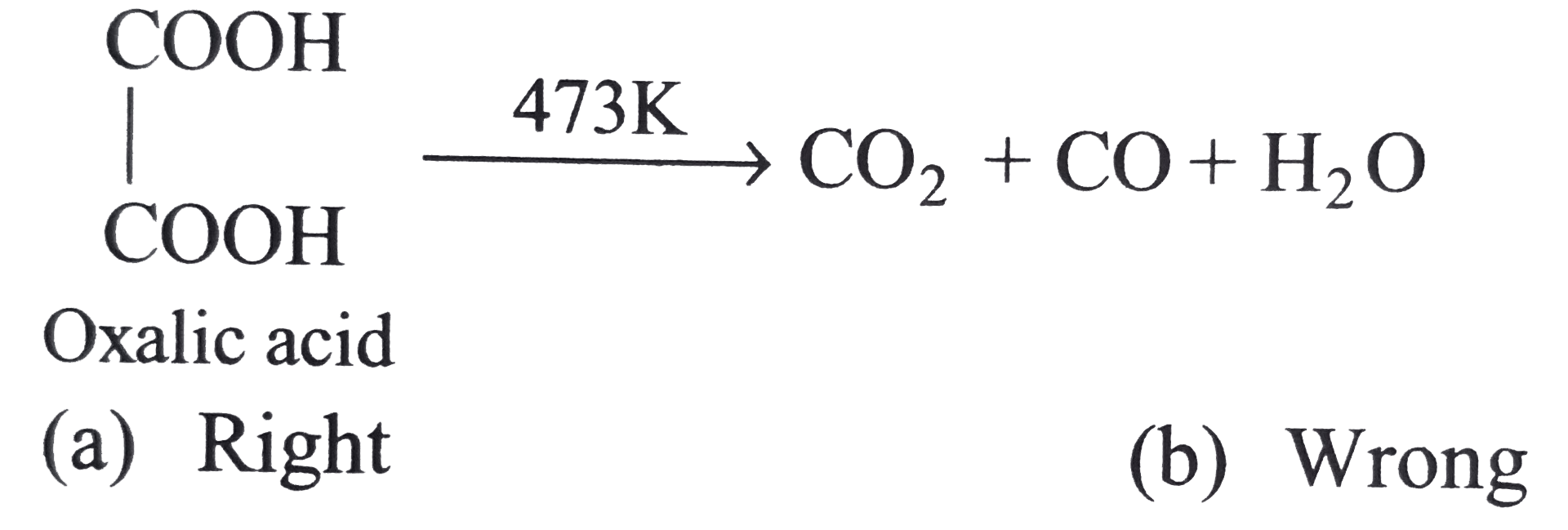 View Solution
View SolutionQuestion 452
Variety of products are obtained when dicarboxylic acids are heated. The nature of product depends on the carbon chain length seperating the two carboxylic groups.
(I) 1 ,2 and 1,3-dibasic acids on heating give monocarboxylic acid
(II) 1,4 and 1,5-dibasic acids on heating give cyclic anhydride
(III) 1,6 and 1,7-dibasic acids give cyclic ketones.
Indicate whether the following reactions are right or wrong.
 View Solution
View SolutionQuestion 453
Variety of products are obtained when dicarboxylic acids are heated. The nature of product depends on the carbon chain length seperating the two carboxylic groups.
(I) 1 ,2 and 1,3-dibasic acids on heating give monocarboxylic acid
(II) 1,4 and 1,5-dibasic acids on heating give cyclic anhydride
(III) 1,6 and 1,7-dibasic acids give cyclic ketones.
Indicate whether the following reactions are right or wrong.
 View Solution
View SolutionQuestion 454
Variety of products are obtained when dicarboxylic acids are heated. The nature of product depends on the carbon chain length seperating the two carboxylic groups.
(I) 1 ,2 and 1,3-dibasic acids on heating give monocarboxylic acid
(II) 1,4 and 1,5-dibasic acids on heating give cyclic anhydride
(III) 1,6 and 1,7-dibasic acids give cyclic ketones.
Indicate whether the following reactions are right or wrong.
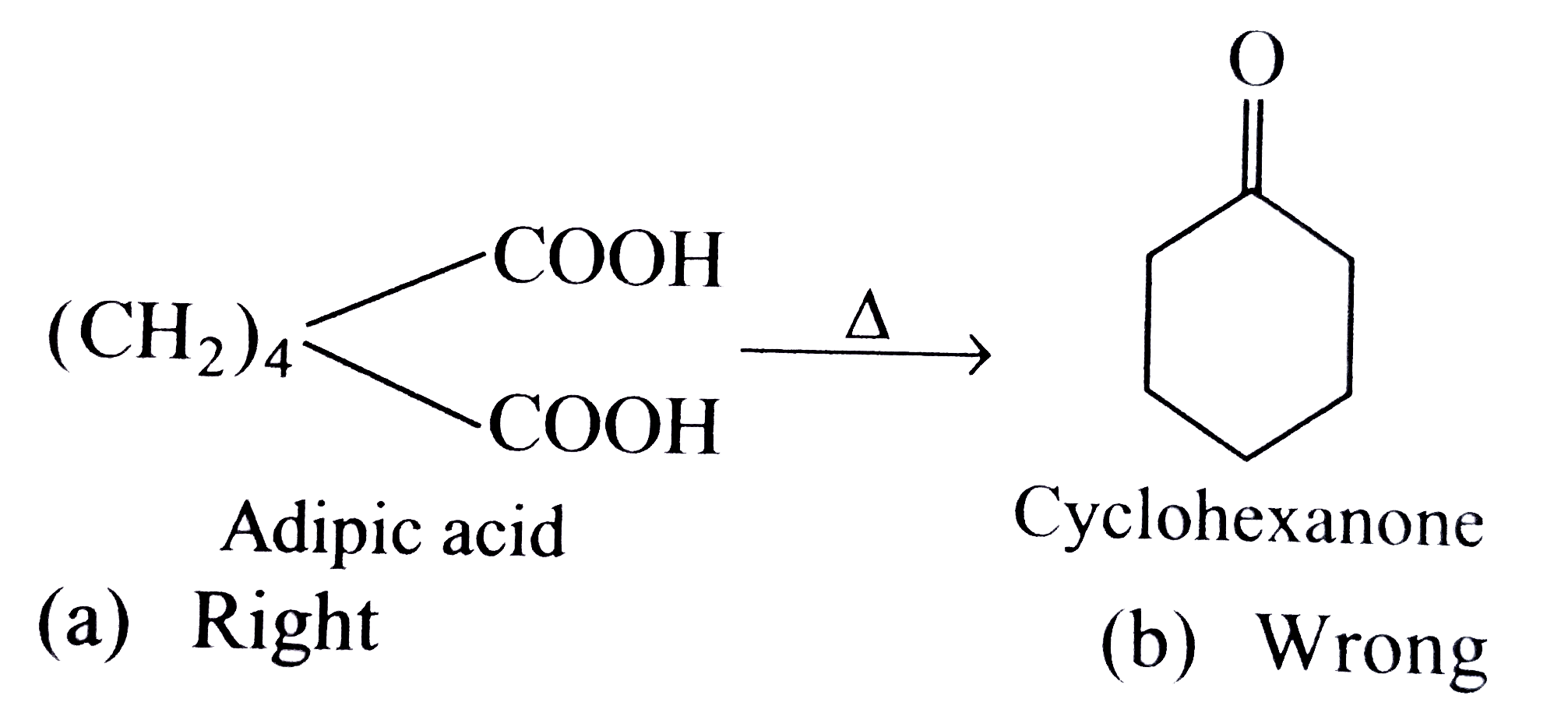 View Solution
View SolutionQuestion 455
Variety of products are obtained when dicarboxylic acids are heated. The nature of product depends on the carbon chain length seperating the two carboxylic groups.
(I) 1 ,2 and 1,3-dibasic acids on heating give monocarboxylic acid
(II) 1,4 and 1,5-dibasic acids on heating give cyclic anhydride
(III) 1,6 and 1,7-dibasic acids give cyclic ketones.
Indicate whether the following reactions are right or wrong.
 View Solution
View SolutionQuestion 471
This reaction takes place between two molecules of esters (same or different). One ester should have atleast one α-hydrogen atom which behaves as a reagent. The reaction is catalyzed by strong bas elike C2H5¯¯¯ONa+ in presence of C2H5OH. The product of this reaction is β-ketoster:

Which of the following esters will not undergo classin condensation?View SolutionQuestion 472
This reaction takes place between two molecules of esters (same or different). One ester should have atleast one α-hydrogen atom which behaves as a reagent. The reaction is catalyzed by strong bas elike C2H5¯¯¯ONa+ in presence of C2H5OH. The product of this reaction is β-ketoster:

Which of the following esters will undergo Claisen condensation to form acetoacetic ester ? View SolutionQuestion 473
This reaction takes place between two molecules of esters (same or different). One ester should have atleast one α-hydrogen atom which behaves as a reagent. The reaction is catalyzed by strong bas elike C2H5¯¯¯ONa+ in presence of C2H5OH. The product of this reaction is β-ketoster:

When two esters having α-hydrogen are subjected to Claisen condensation then we get:View SolutionQuestion 474
This reaction takes place between two molecules of esters (same or different). One ester should have atleast one α-hydrogen atom which behaves as a reagent. The reaction is catalyzed by strong bas elike C2H5¯¯¯ONa+ in presence of C2H5OH. The product of this reaction is β-ketoster:

When one ester has α-hydrogen and other has no α-hydrogen then Claisen condensation will give: View SolutionQuestion 475
This reaction takes place between two molecules of esters (same or different). One ester should have atleast one α-hydrogen atom which behaves as a reagent. The reaction is catalyzed by strong bas elike C2H5¯¯¯ONa+ in presence of C2H5OH. The product of this reaction is β-ketoster:

Which among the following is the most reactive towards Claisen condensation ? View SolutionQuestion 476
The reactivity of acid derivatives in general follows the order:

The above order of reactivity can be explained in terms of the:
(i) Basicity of leaving group (ii) Resonance effect
(iii) Inductive effect
Weaker is the basic character of leaving group, more is the reactivity of acid derivative. In general, all the acid derivatives show resonance as follows:
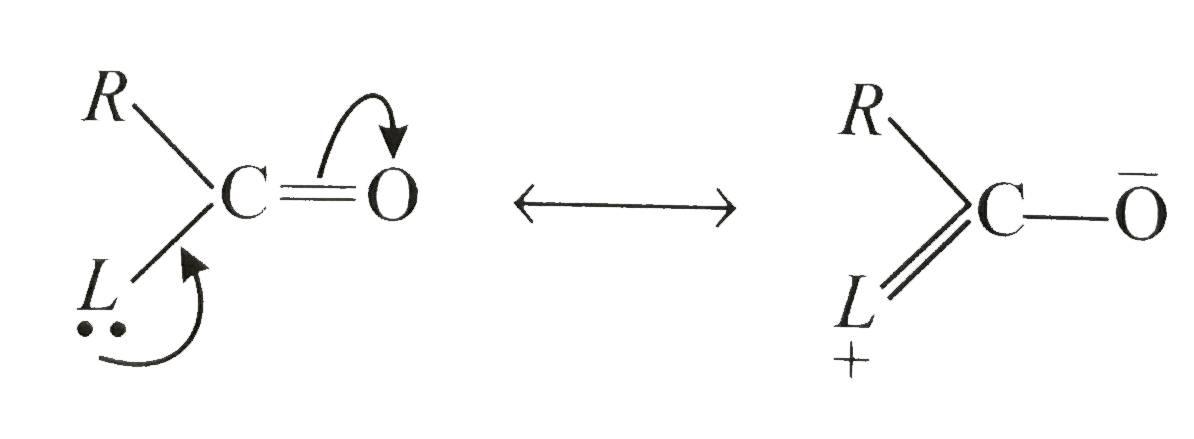
More is the stabilization, lesser is the reactivity and vice -versa.
Which among the following anions is the most basic ? View SolutionQuestion 477
The reactivity of acid derivatives in general follows the order:

The above order of reactivity can be explained in terms of the:
(i) Basicity of leaving group (ii) Resonance effect
(iii) Inductive effect
Weaker is the basic character of leaving group, more is the reactivity of acid derivative. In general, all the acid derivatives show resonance as follows:
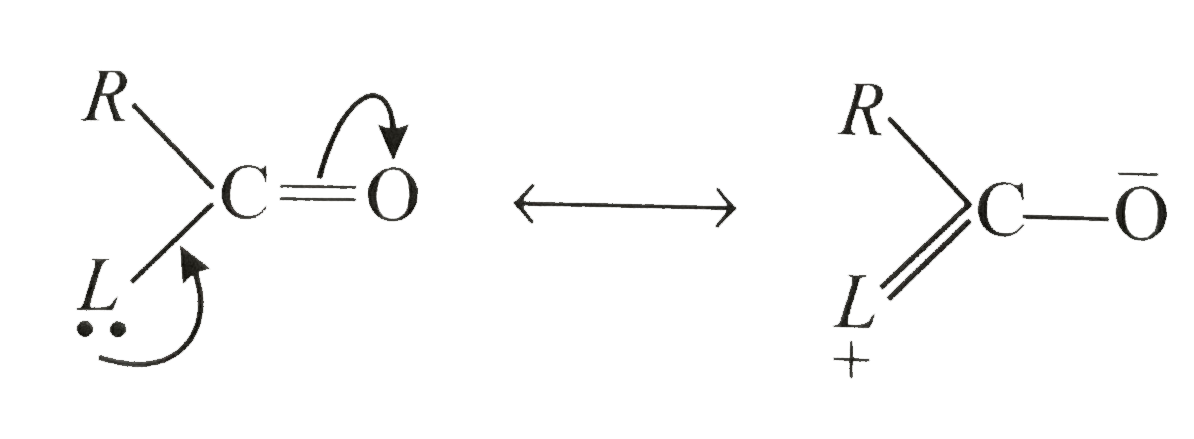
More is the stabilization, lesser is the reactivity and vice -versa.
Which is the most reactive acid derivative?View SolutionQuestion 478
The reactivity of acid derivatives in general follows the order:

The above order of reactivity can be explained in terms of the:
(i) Basicity of leaving group (ii) Resonance effect
(iii) Inductive effect
Weaker is the basic character of leaving group, more is the reactivity of acid derivative. In general, all the acid derivatives show resonance as follows:
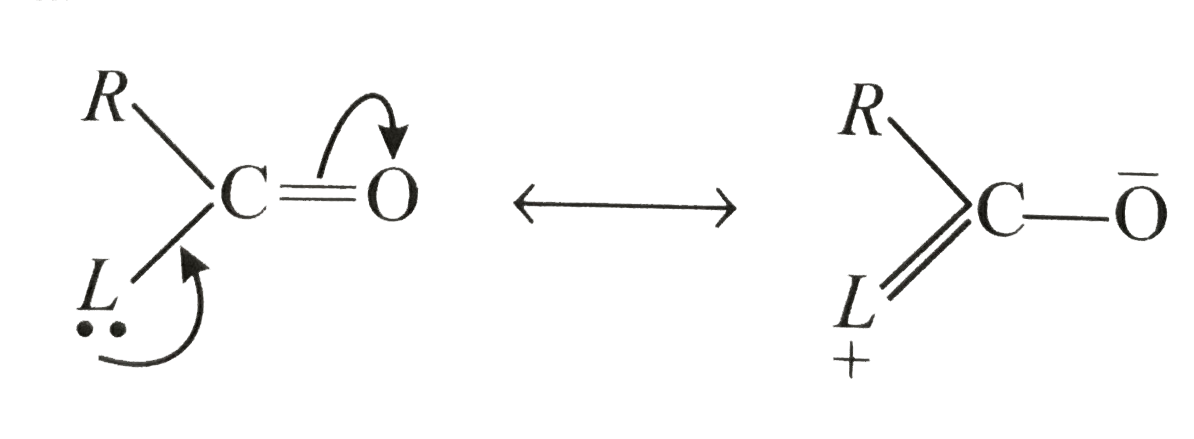
More is the stabilization, lesser is the reactivity and vice -versa.
Which among the following acid halides is the most reactive?View SolutionQuestion 479
The reactivity of acid derivatives in general follows the order:

The above order of reactivity can be explained in terms of the:
(i) Basicity of leaving group (ii) Resonance effect
(iii) Inductive effect
Weaker is the basic character of leaving group, more is the reactivity of acid derivative. In general, all the acid derivatives show resonance as follows:
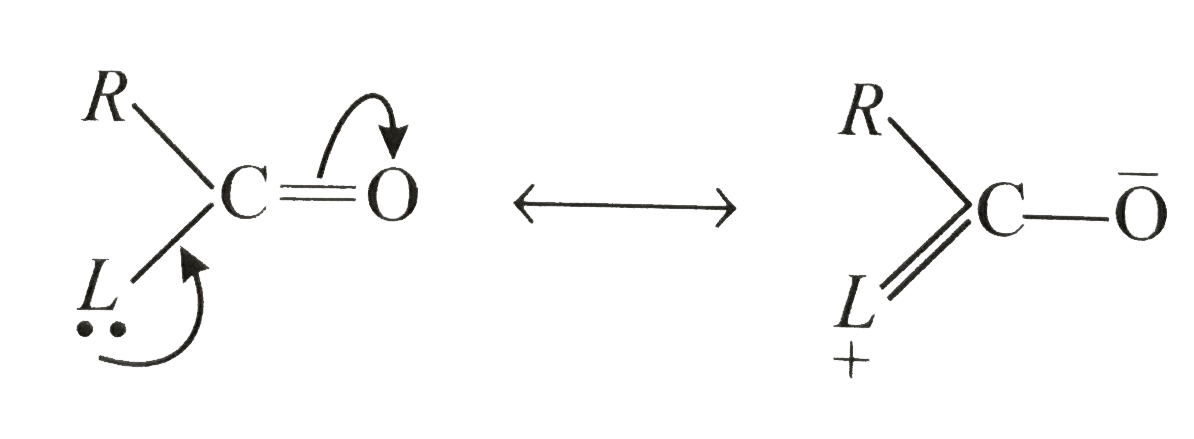
More is the stabilization, lesser is the reactivity and vice -versa.
Acid derivatives although contain −CO∣∣C− group yet do not undergo the usual properties of carbonyl group. It is due to :View SolutionQuestion 480
The reactivity of acid derivatives in general follows the order:

The above order of reactivity can be explained in terms of the:
(i) Basicity of leaving group (ii) Resonance effect
(iii) Inductive effect
Weaker is the basic character of leaving group, more is the reactivity of acid derivative. In general, all the acid derivatives show resonance as follows:
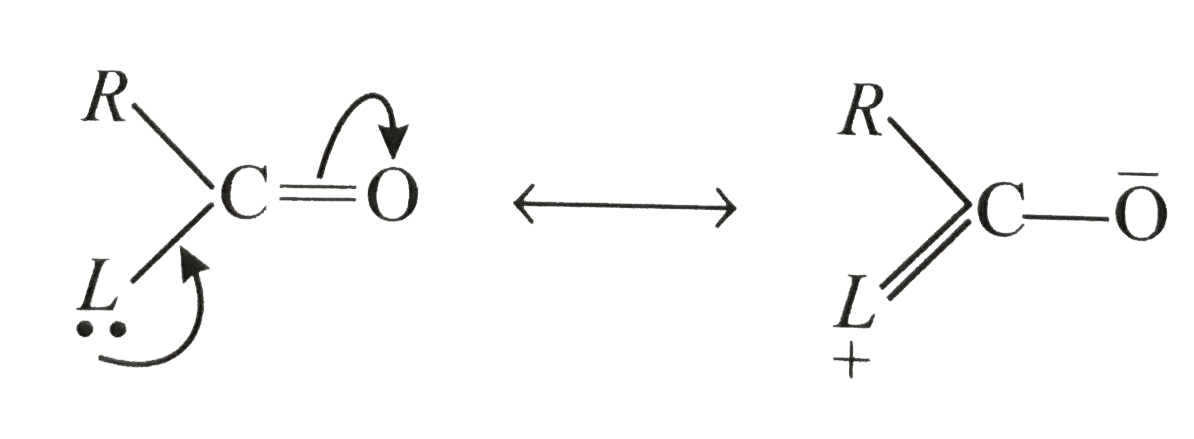
More is the stabilization, lesser is the reactivity and vice -versa.
Which of the following compounds will be the most easily hydrolysed? View SolutionQuestion 481
Amides with no substitution on nitrogen react with tht: solution of bromine or chlorine in NaOH or KOH to yield aminei through a reaction called as Hofmann's degradation.
R−O∣∣C−NH2+Br2+4NaOHH2O−−→R−NH2+2NaBr+Na2CO3+2H2O
Amides can be reduced to amines having same number of carbon atoms
R−O∣∣C−NH2−[H]−−−→LiAlH4R−CH2−NH2
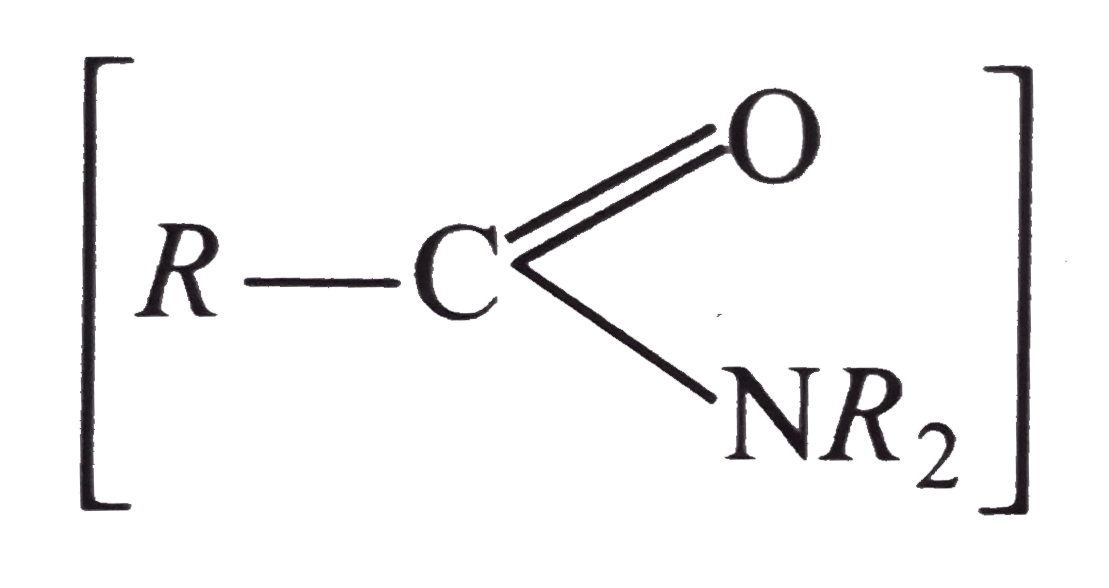 will undergo Hofmann's degradation.View Solution
will undergo Hofmann's degradation.View SolutionQuestion 482
Amides with no substitution on nitrogen react with tht: solution of bromine or chlorine in NaOH or KOH to yield aminei through a reaction called as Hofmann's degradation.
R−O∣∣C−NH2+Br2+4NaOHH2O−−→R−NH2+2NaBr+Na2CO3+2H2O
Amides can be reduced to amines having same number of carbon atoms
R−O∣∣C−NH2−[H]−−−→LiAlH4R−CH2−NH2
Benzamide when treated with Br2 in presence of NaOH gives aniline. View SolutionQuestion 483
Amides with no substitution on nitrogen react with tht: solution of bromine or chlorine in NaOH or KOH to yield aminei through a reaction called as Hofmann's degradation.
R−O∣∣C−NH2+Br2+4NaOHH2O−−→R−NH2+2NaBr+Na2CO3+2H2O
Amides can be reduced to amines having same number of carbon atoms
R−O∣∣C−NH2−[H]−−−→LiAlH4R−CH2−NH2
Iso-cyanates are formed as intermediate in the Hofmann's degradation. View SolutionQuestion 484
Amides with no substitution on nitrogen react with tht: solution of bromine or chlorine in NaOH or KOH to yield aminei through a reaction called as Hofmann's degradation.
R−O∣∣C−NH2+Br2+4NaOHH2O−−→R−NH2+2NaBr+Na2CO3+2H2O
Amides can be reduced to amines having same number of carbon atoms
R−O∣∣C−NH2−[H]−−−→LiAlH4R−CH2−NH2
Carbon dioxide gas is released in above mentioned reaction View SolutionQuestion 485
Amides with no substitution on nitrogen react with tht: solution of bromine or chlorine in NaOH or KOH to yield aminei through a reaction called as Hofmann's degradation.
R−O∣∣C−NH2+Br2+4NaOHH2O−−→R−NH2+2NaBr+Na2CO3+2H2O
Amides can be reduced to amines having same number of carbon atoms
R−O∣∣C−NH2−[H]−−−→LiAlH4R−CH2−NH2
N-Methyl aniline can be obtained by using Hofmann's degradation. View SolutionQuestion 487
If aromatic ring is substituted by more than groups then electrophilic aromatic substitution reaction take place according to more activating group. Types of group which donate electron in aromatic ring known as activating groups.
Major product formation take place at which position in this reaction:
 View Solution
View SolutionQuestion 488
If aromatic ring is substituted by more than groups then electrophilic aromatic substitution reaction take place according to more activating group. Types of group which donate electron in aromatic ring known as activating groups.
Find out major product of following reaction :
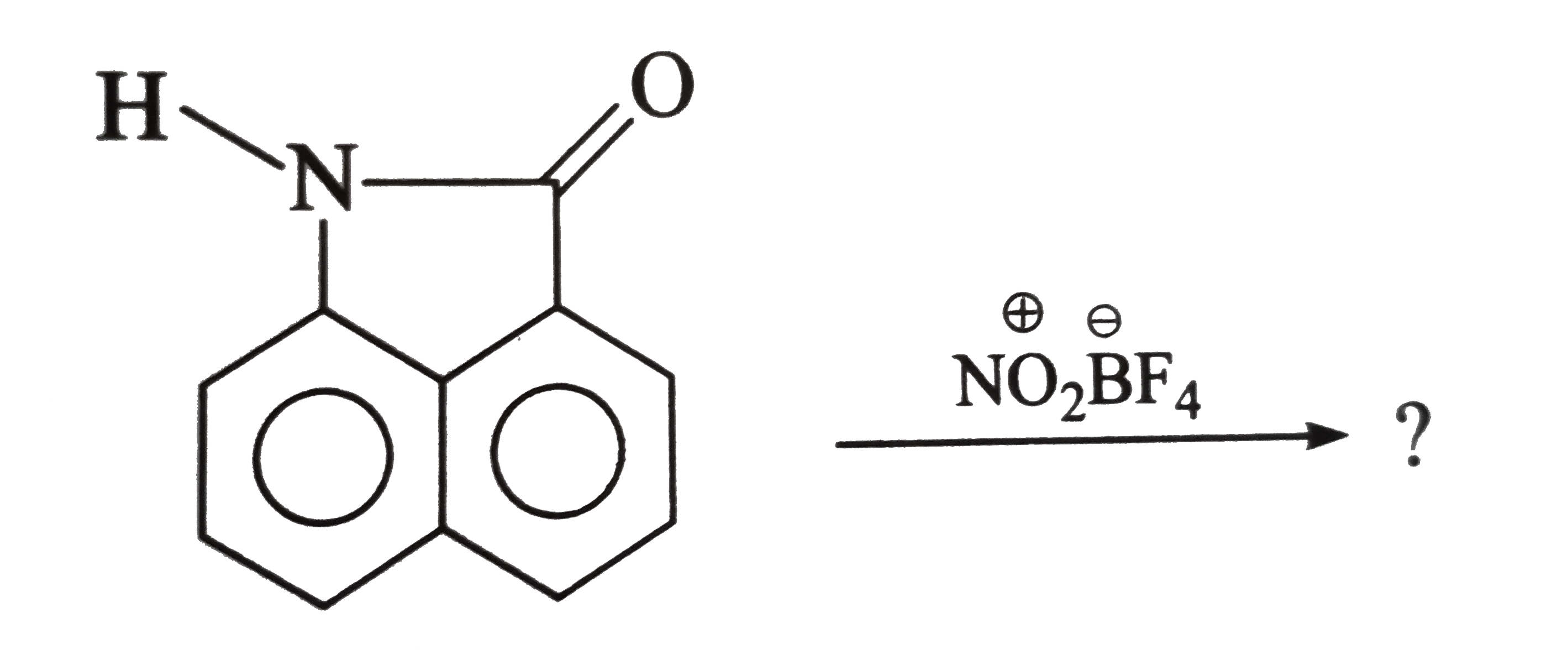 View Solution
View SolutionQuestion 489
Phenolic esters heating with AlCl3 (Lewis acid ) gives ortho and para acyl phenol . This is known as Fries rearrangement .
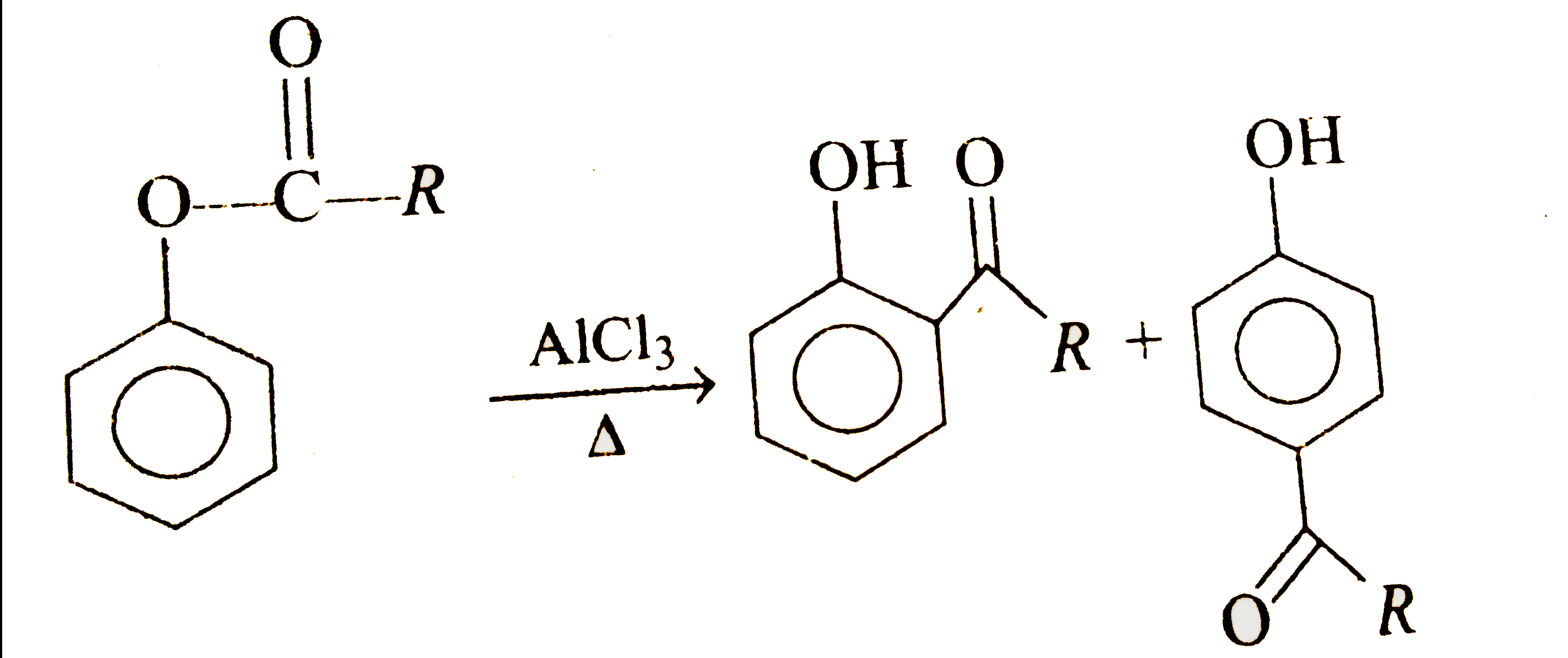
In general, low temperature favours the para product and high tempearture favaous orhto product .
Mechanism :
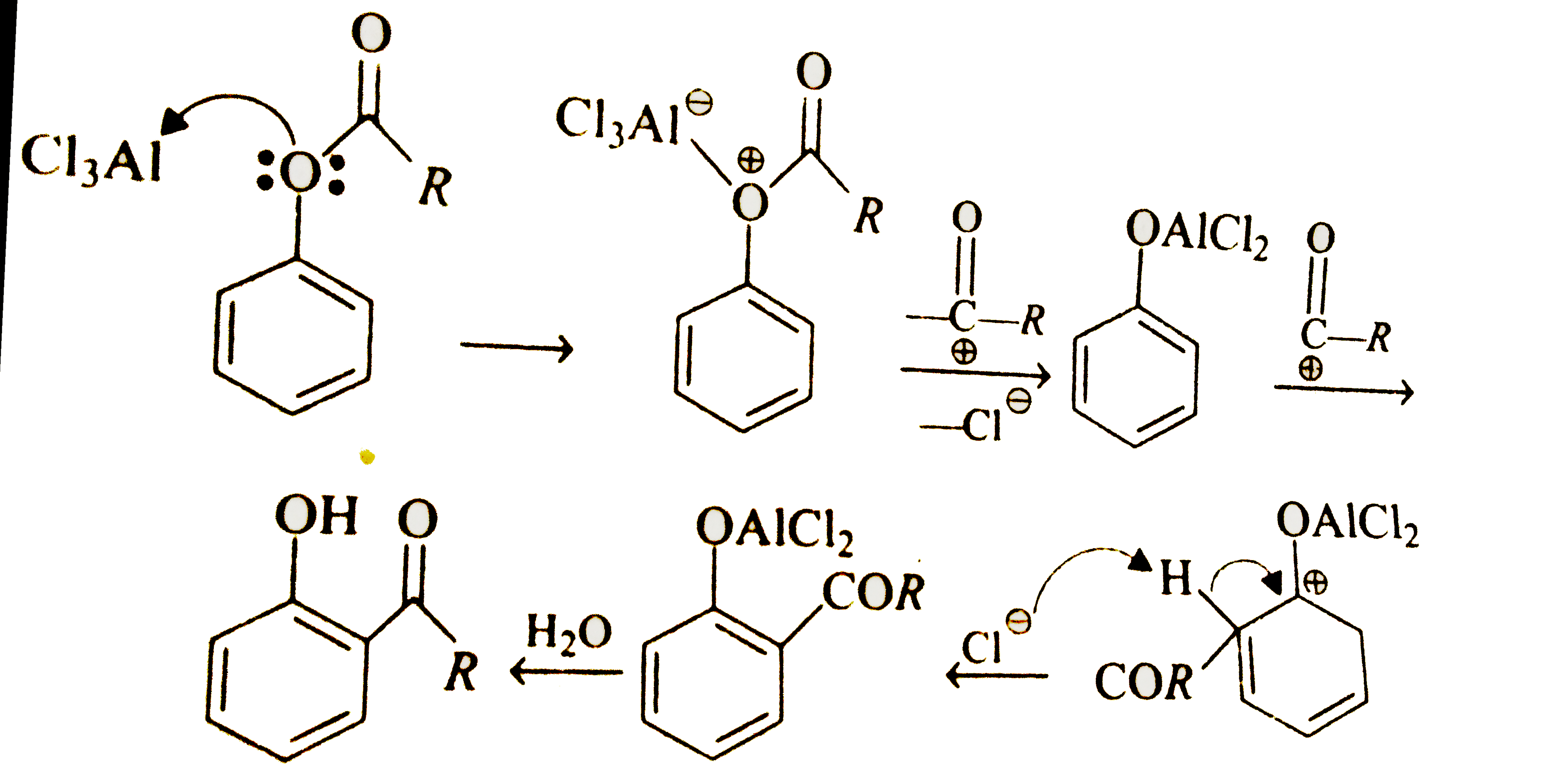
If one of the ortho position is subtituted by any group then para is the major product
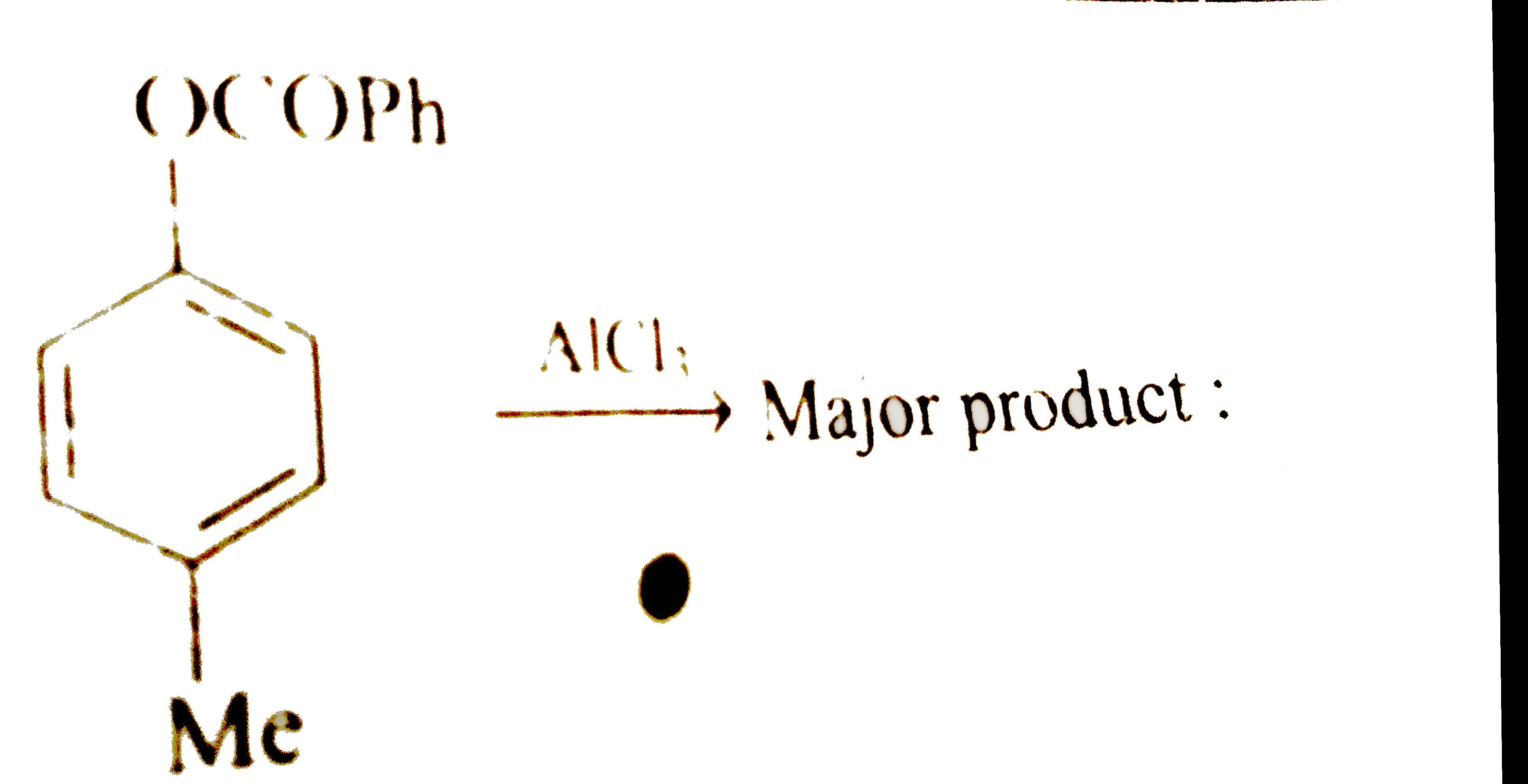 AlCl3−−→ Major product :View Solution
AlCl3−−→ Major product :View SolutionQuestion 490
Phenolic esters heating with AlCl3 (Lewis acid ) gives ortho and para acyl phenol . This is known as Fries rearrangement .
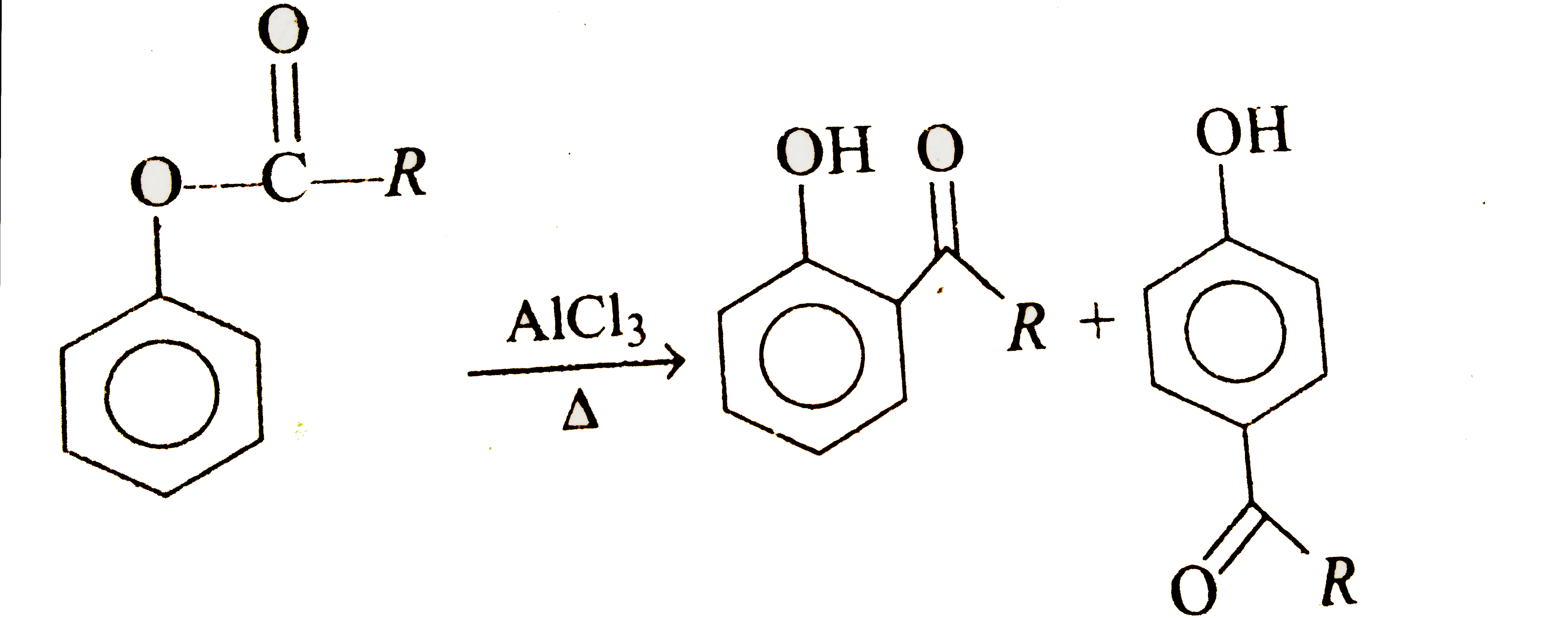
In general, low temperature favours the para product and high tempearture favaous orhto product .
Mechanism :
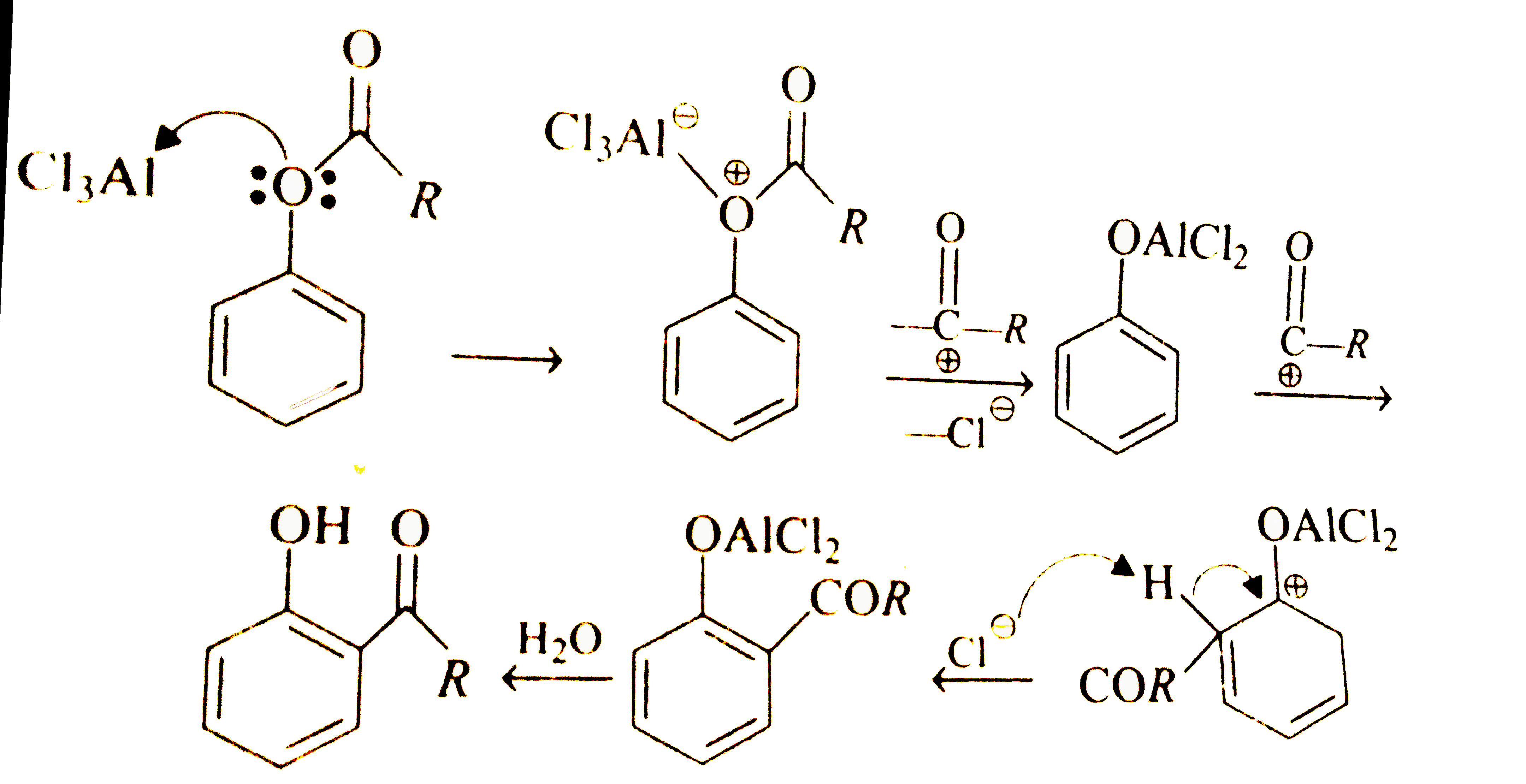
If one of the ortho position is subtituted by any group then para is the major product
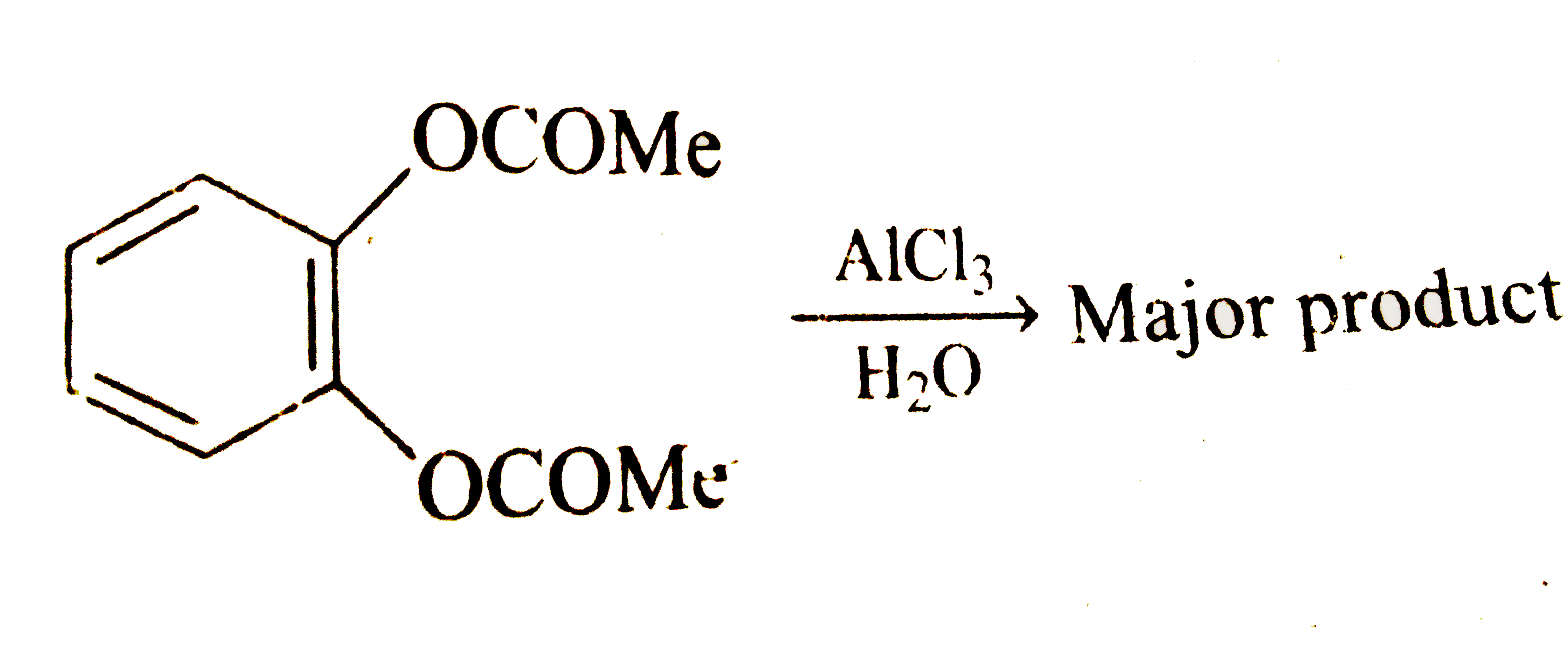 AlCl3−−→H2O Major product :View Solution
AlCl3−−→H2O Major product :View SolutionQuestion 491
Phenolic esters heating with AlCl3 (Lewis acid ) gives ortho and para acyl phenol . This is known as Fries rearrangement .
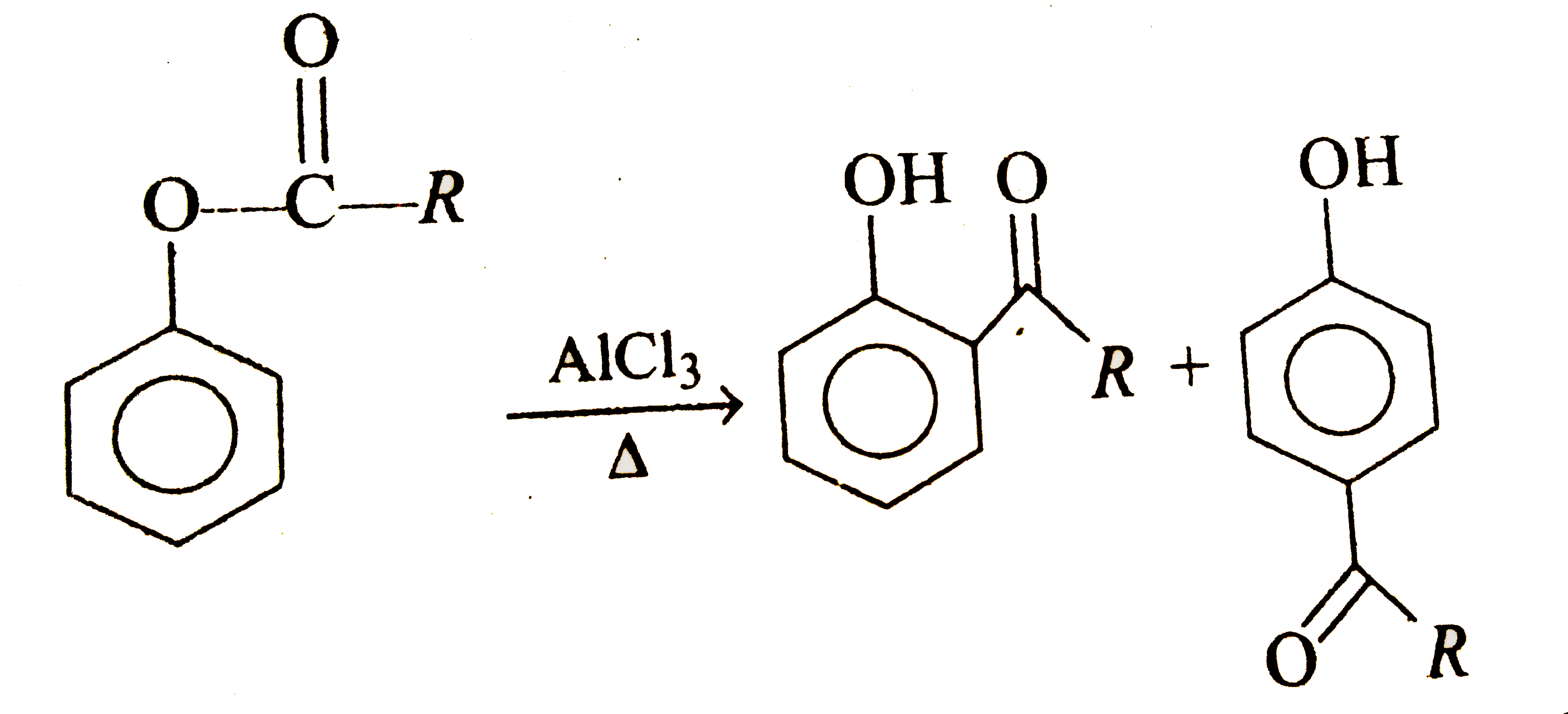
In general, low temperature favours the para product and high tempearture favaous orhto product .
Mechanism :
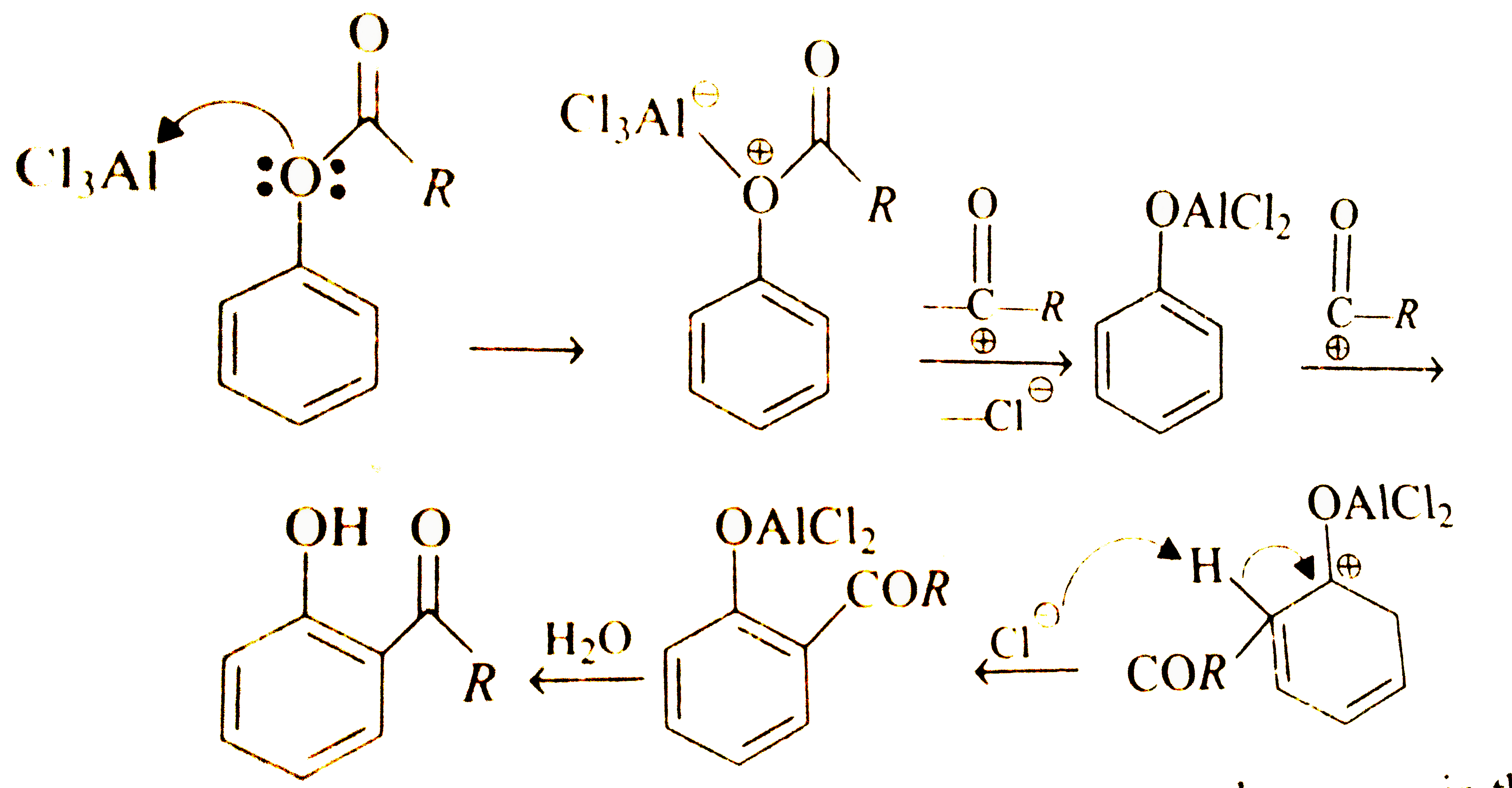
If one of the ortho position is subtituted by any group then para is the major product
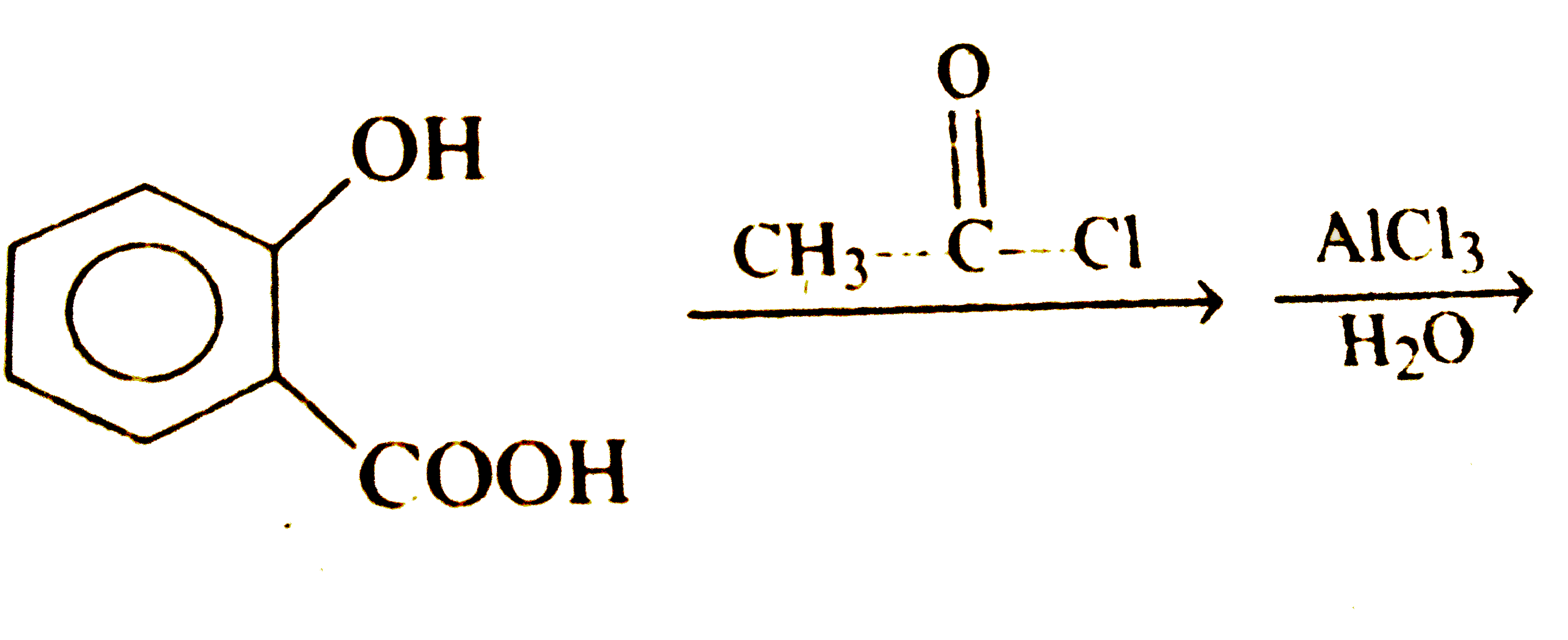 View Solution
View SolutionQuestion 492
Any compound fonned by the reaction of a water insoluble fatty acid with a metallic radical or with an organic base may be called as soap. Soaps used for cleaning purpose are sodium or potassium salts of long chain fatty acids, e.g., palmitic, lauric, stearic and oleic acids. Soaps arc generally obtained by the hydrolysis of oils and fats with aqueous alkali. This reaction is called saponification
Synthetic detergents are cleansing agents which have all the properties of soaps, but they actually do not contain any soap. A synthetic detergent is the sodium salt of a long chain alkyl hyydrogen sulphate or the sodium salt of a long chain benzene sulphonic acid.
Sodium salts of higher fatty acids are known as: View SolutionQuestion 493
Any compound fonned by the reaction of a water insoluble fatty acid with a metallic radical or with an organic base may be called as soap. Soaps used for cleaning purpose are sodium or potassium salts of long chain fatty acids, e.g., palmitic, lauric, stearic and oleic acids. Soaps arc generally obtained by the hydrolysis of oils and fats with aqueous alkali. This reaction is called saponification
Synthetic detergents are cleansing agents which have all the properties of soaps, but they actually do not contain any soap. A synthetic detergent is the sodium salt of a long chain alkyl hyydrogen sulphate or the sodium salt of a long chain benzene sulphonic acid.
The reaction between alkali and fat is called: View SolutionQuestion 494
Any compound fonned by the reaction of a water insoluble fatty acid with a metallic radical or with an organic base may be called as soap. Soaps used for cleaning purpose are sodium or potassium salts of long chain fatty acids, e.g., palmitic, lauric, stearic and oleic acids. Soaps arc generally obtained by the hydrolysis of oils and fats with aqueous alkali. This reaction is called saponification
Synthetic detergents are cleansing agents which have all the properties of soaps, but they actually do not contain any soap. A synthetic detergent is the sodium salt of a long chain alkyl hyydrogen sulphate or the sodium salt of a long chain benzene sulphonic acid.
View SolutionQuestion 495
Any compound fonned by the reaction of a water insoluble fatty acid with a metallic radical or with an organic base may be called as soap. Soaps used for cleaning purpose are sodium or potassium salts of long chain fatty acids, e.g., palmitic, lauric, stearic and oleic acids. Soaps arc generally obtained by the hydrolysis of oils and fats with aqueous alkali. This reaction is called saponification
Synthetic detergents are cleansing agents which have all the properties of soaps, but they actually do not contain any soap. A synthetic detergent is the sodium salt of a long chain alkyl hyydrogen sulphate or the sodium salt of a long chain benzene sulphonic acid.
Soaps can be classified as :View SolutionQuestion 496
Any compound fonned by the reaction of a water insoluble fatty acid with a metallic radical or with an organic base may be called as soap. Soaps used for cleaning purpose are sodium or potassium salts of long chain fatty acids, e.g., palmitic, lauric, stearic and oleic acids. Soaps arc generally obtained by the hydrolysis of oils and fats with aqueous alkali. This reaction is called saponification
Synthetic detergents are cleansing agents which have all the properties of soaps, but they actually do not contain any soap. A synthetic detergent is the sodium salt of a long chain alkyl hyydrogen sulphate or the sodium salt of a long chain benzene sulphonic acid.
Which one is not a glyceride? View SolutionQuestion 497
The reaction of compounf P with CH3MgBr (excess) in (C2H5_(2)O followed by addition of H2O give Q the compound Q on treatment with H2SO4 at 0∘ C gives R. the reaaction of R with CH3COCl in the presence of anhydrous AlCl3 in CH2Cl2 followed by treatment with H2O "produces compound S. [Et in compound P is ethyl group]
The reaction, Q to R and R TO S, are View SolutionQuestion 498
The reaction of compounf P with CH3MgBr (excess) in (C2H5_(2)O followed by addition of H2O give Q the compound Q on treatment with H2SO4 at 0∘ C gives R. the reaaction of R with CH3COCl in the presence of anhydrous AlCl3 in CH2Cl2 followed by treatment with H2O "produces compound S. [Et in compound P is ethyl group]
The reaction, Q to R and R TO S, are View Solution
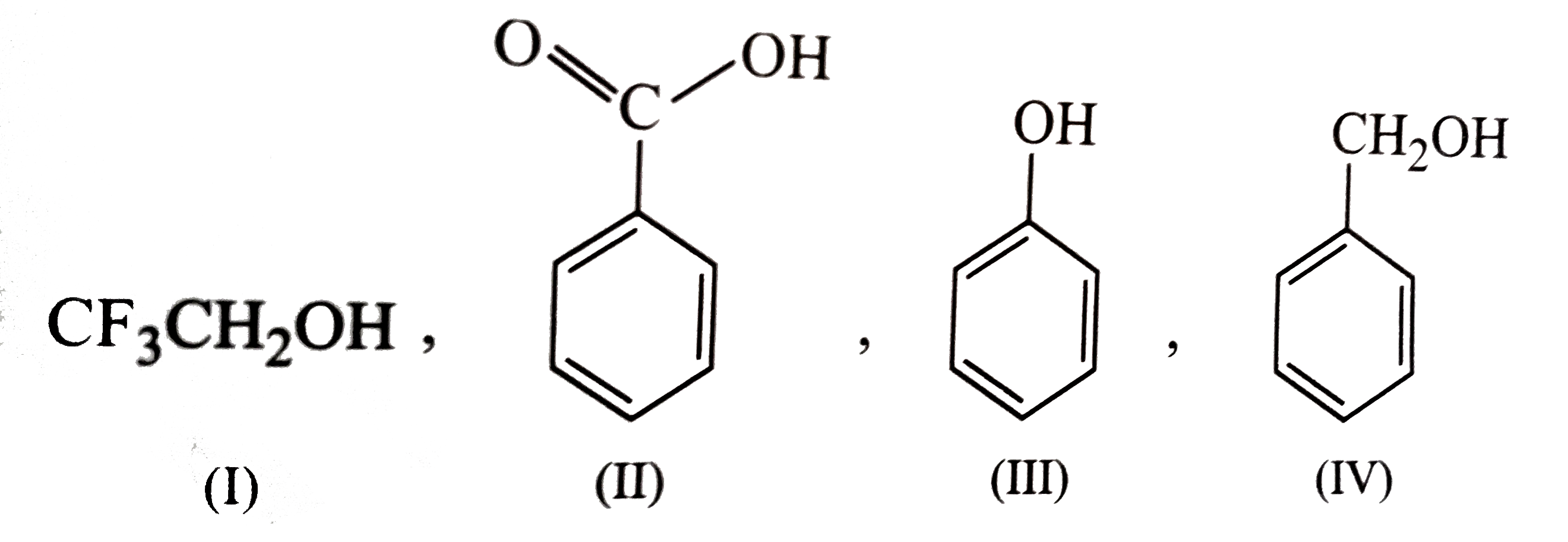

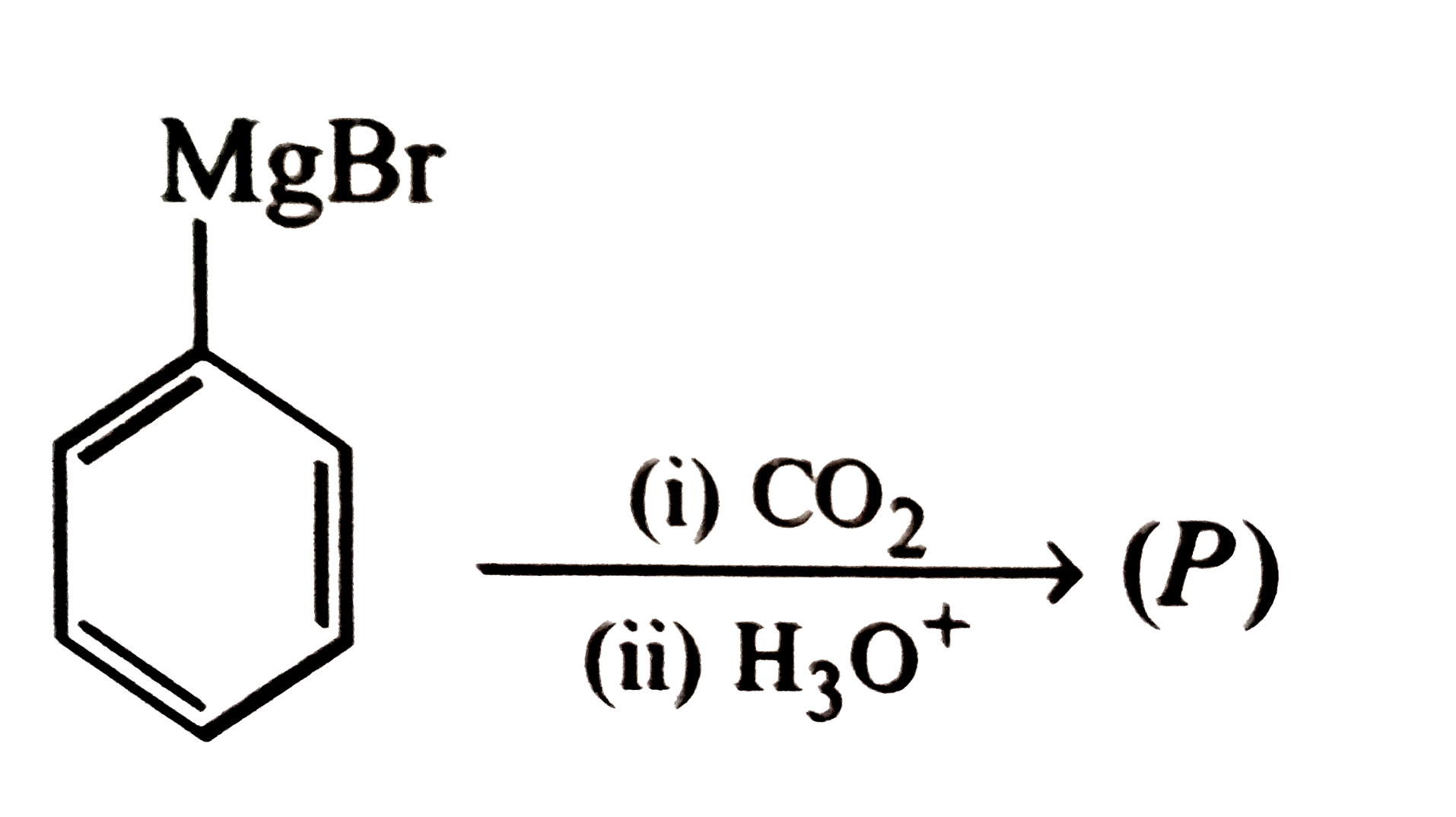
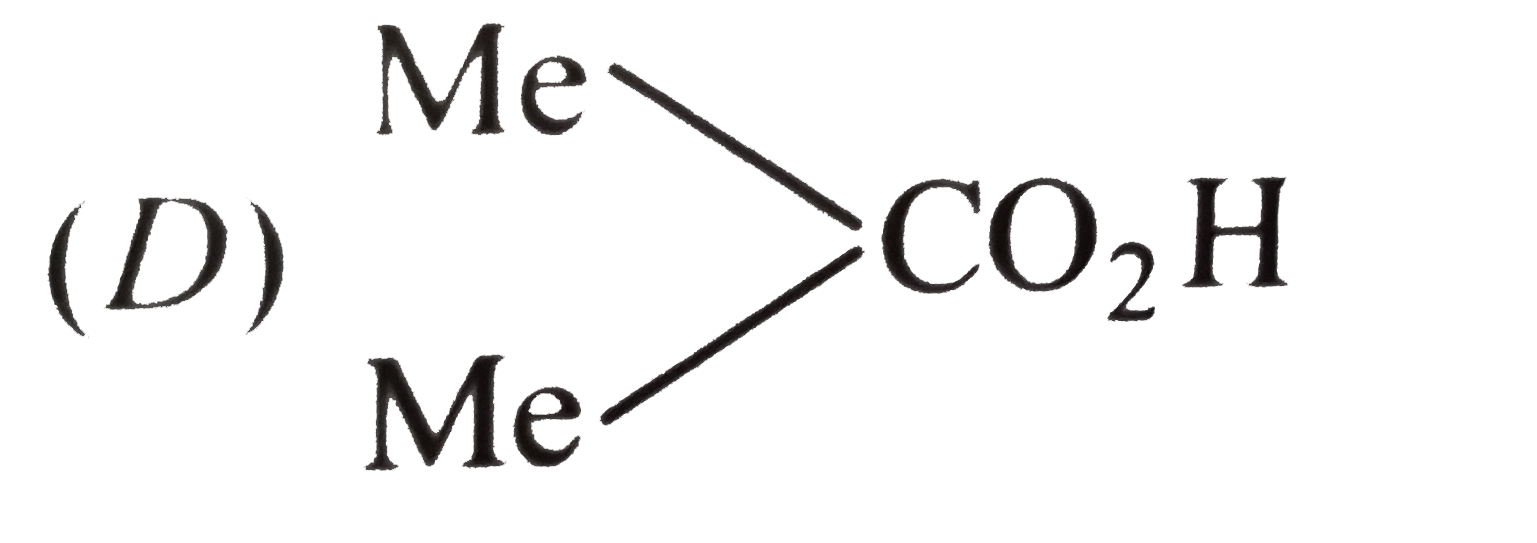


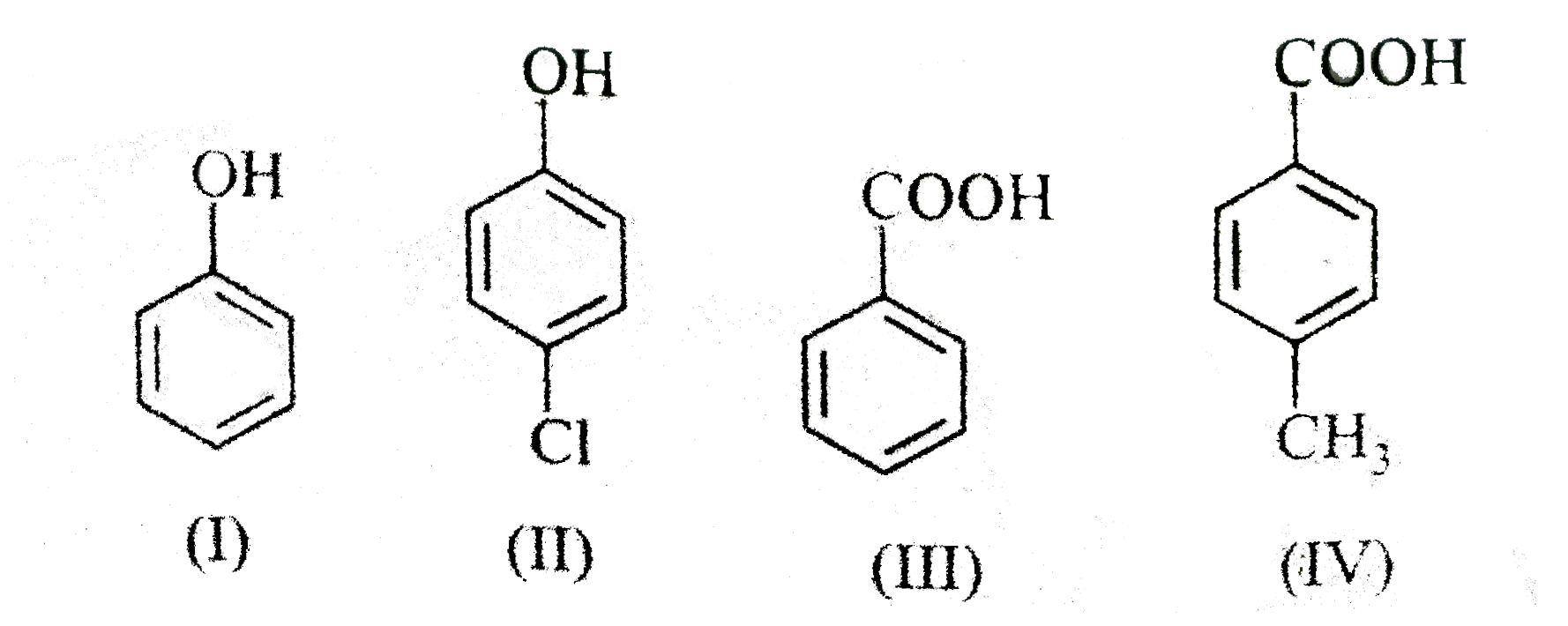
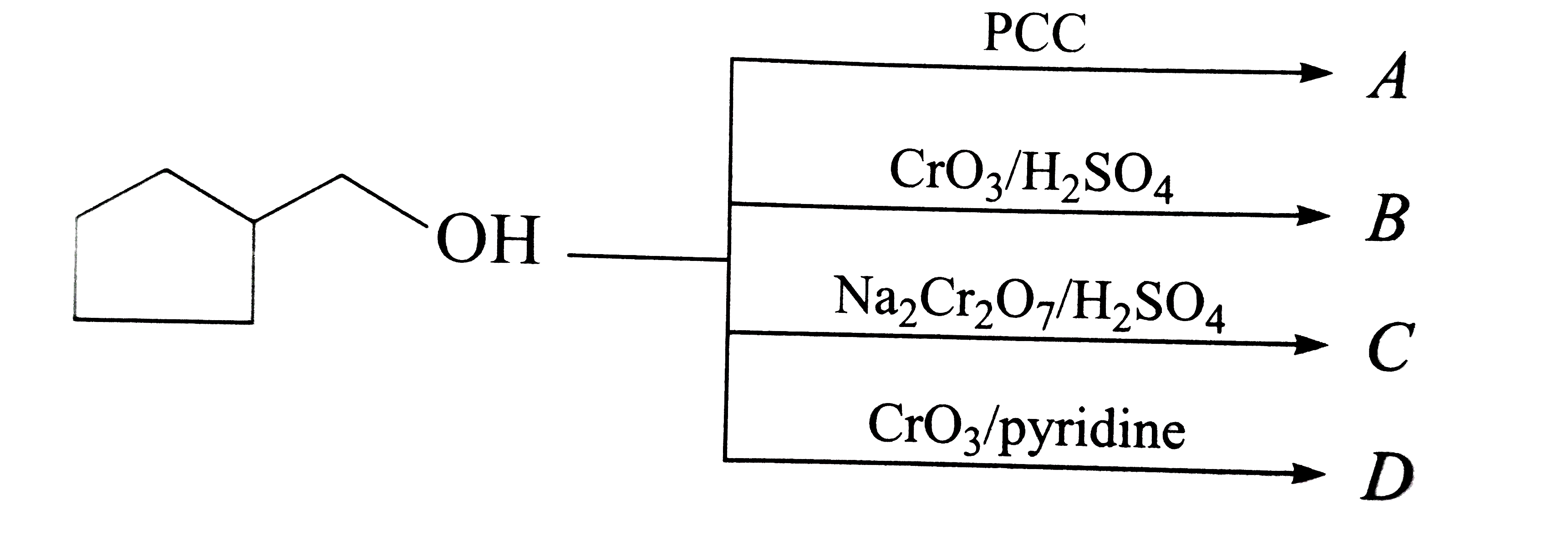
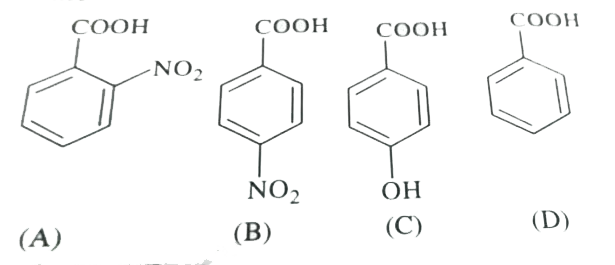
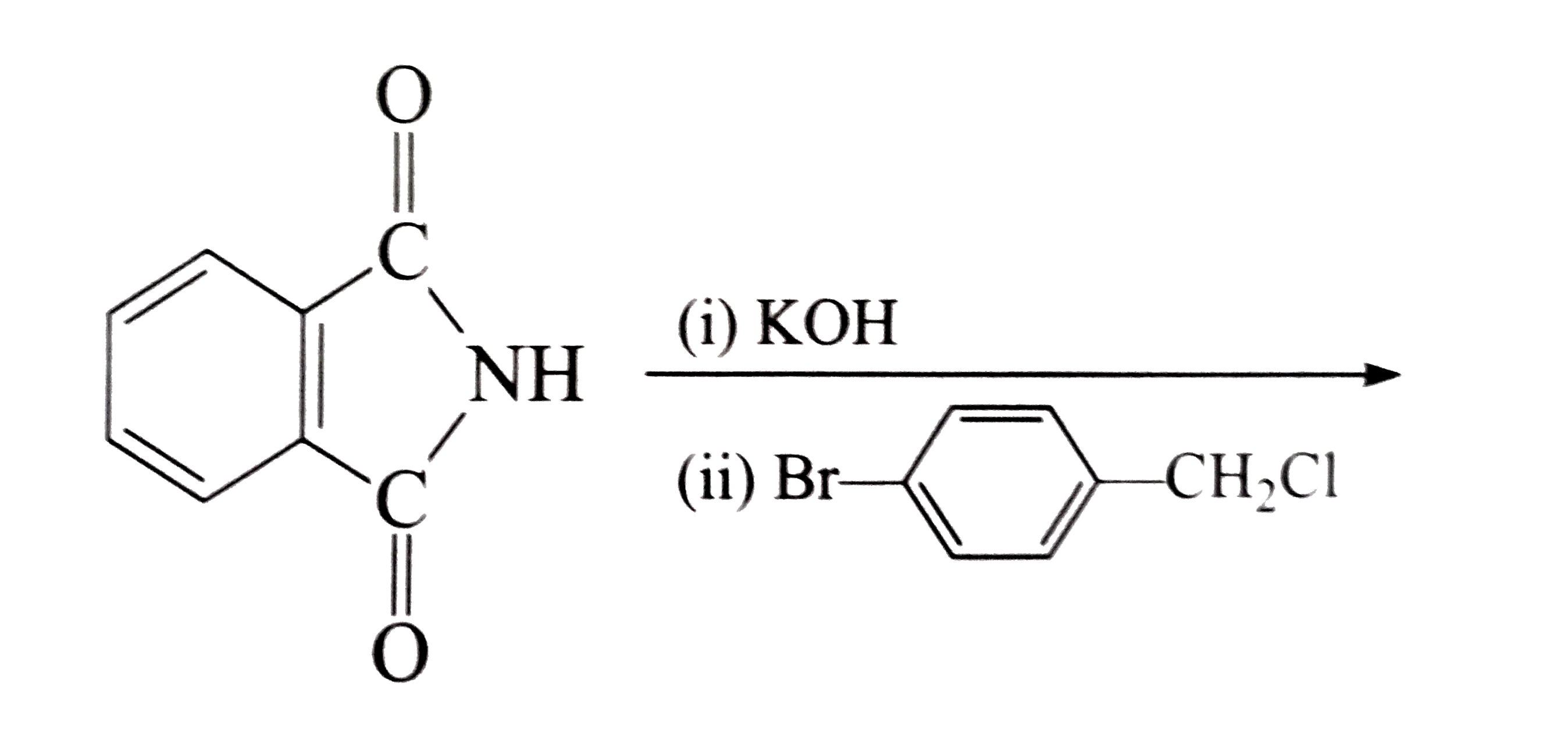



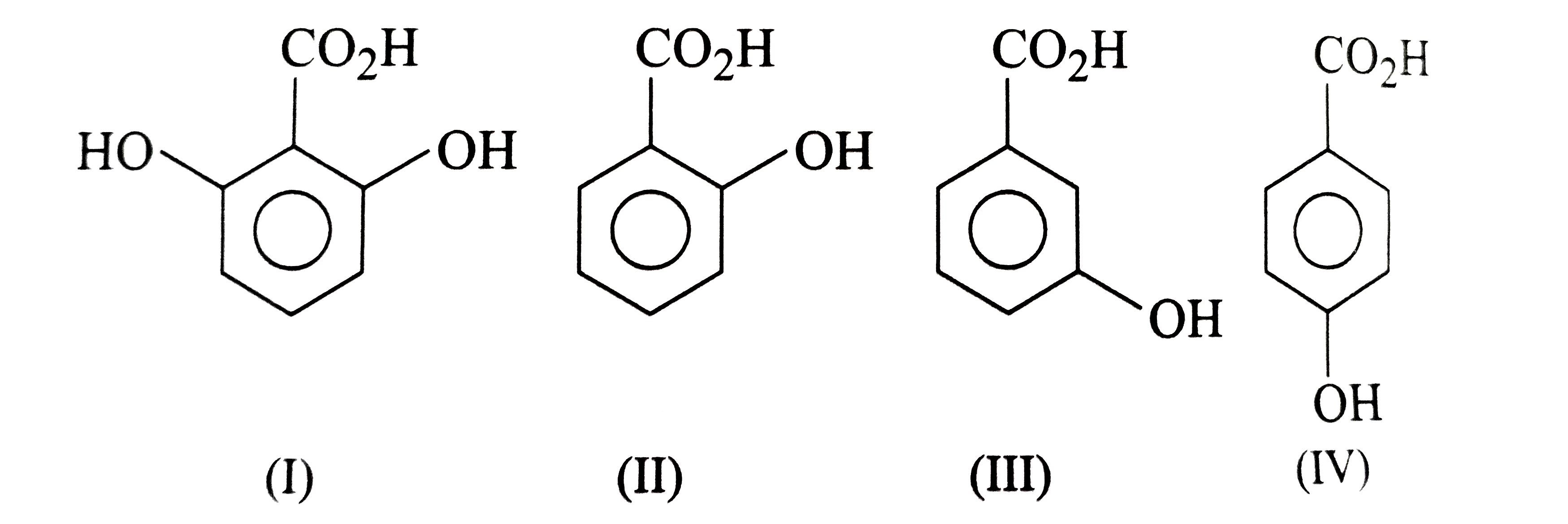



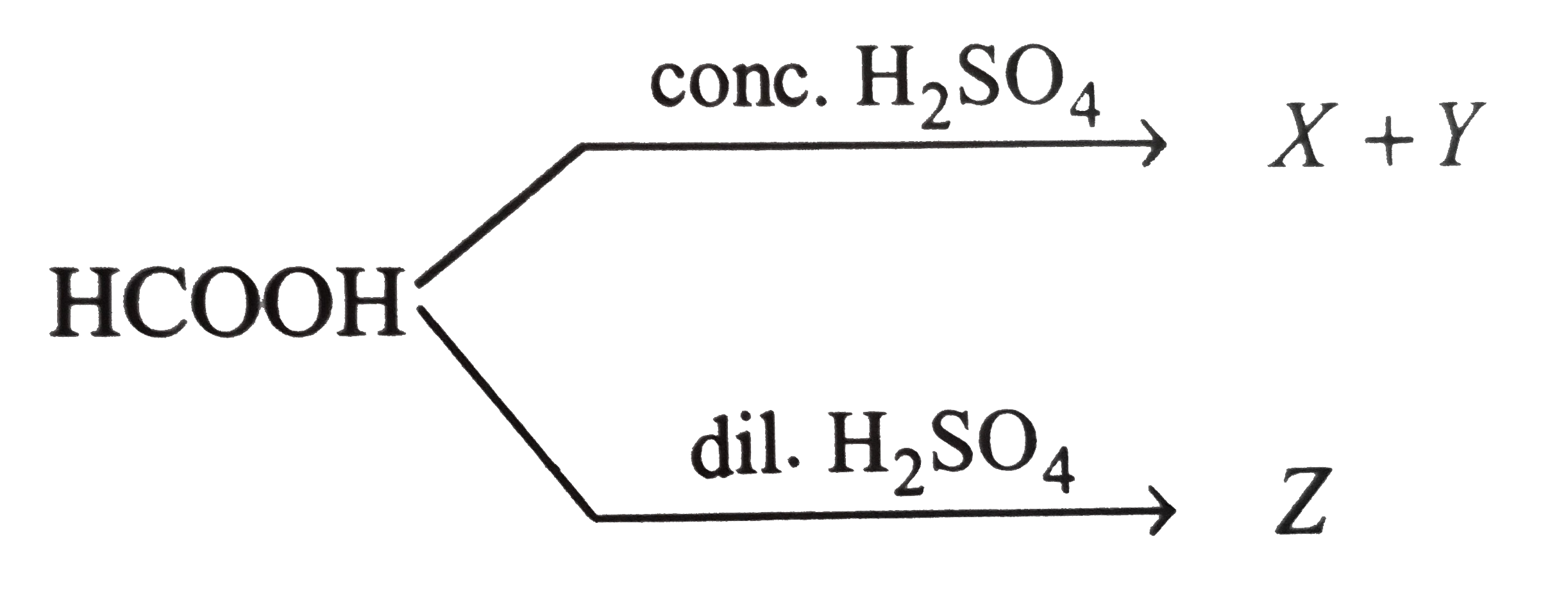
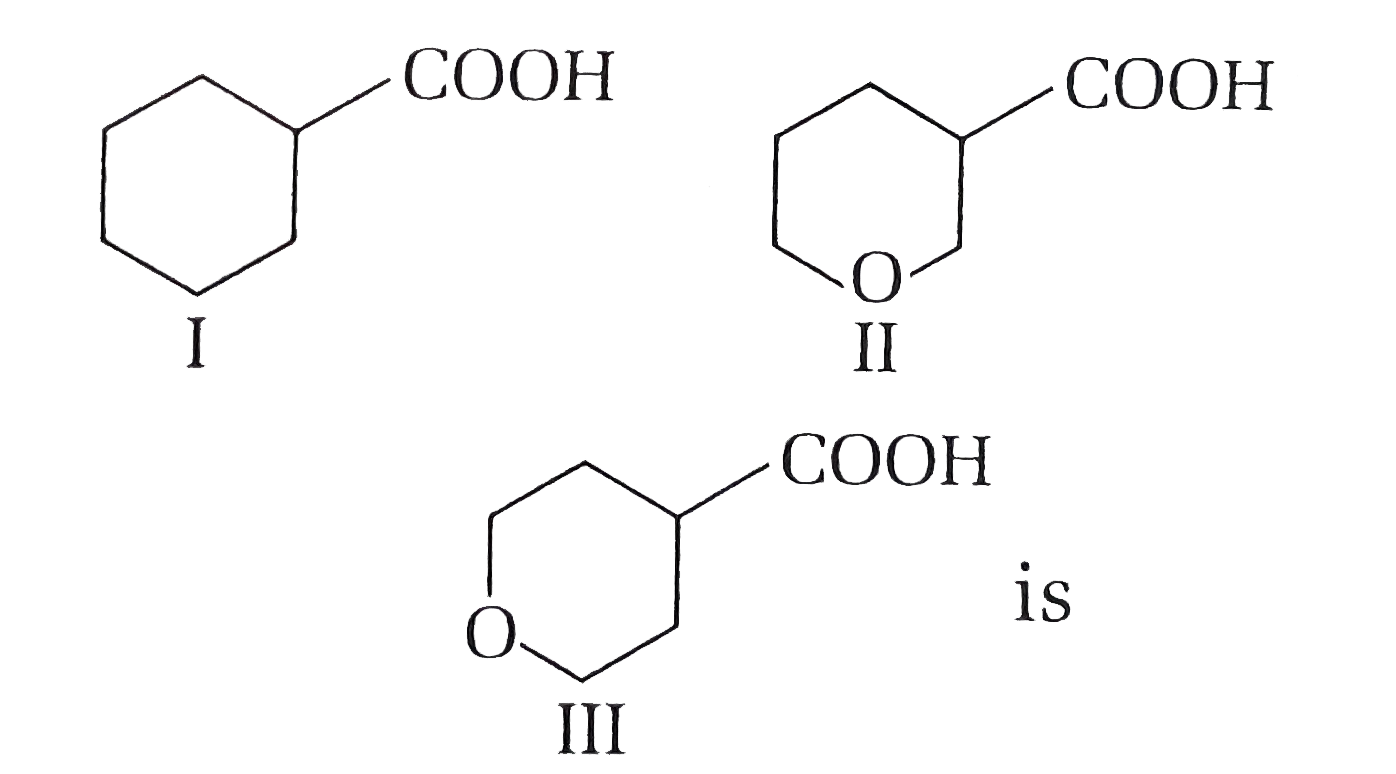
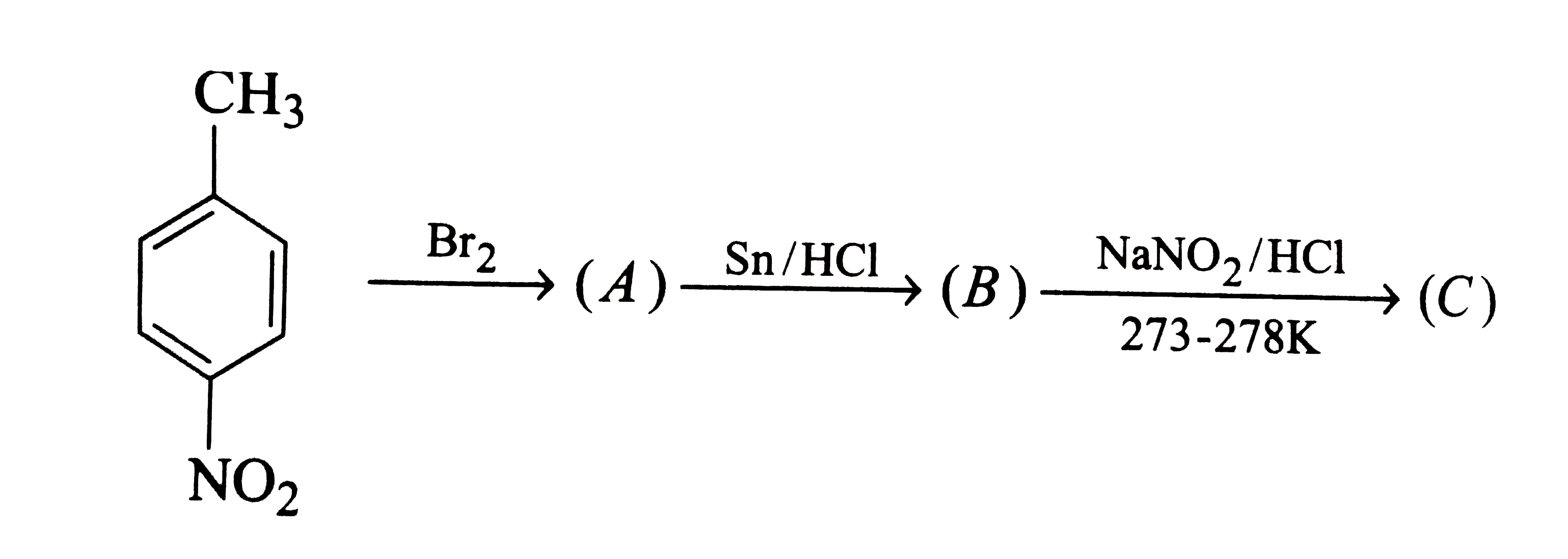

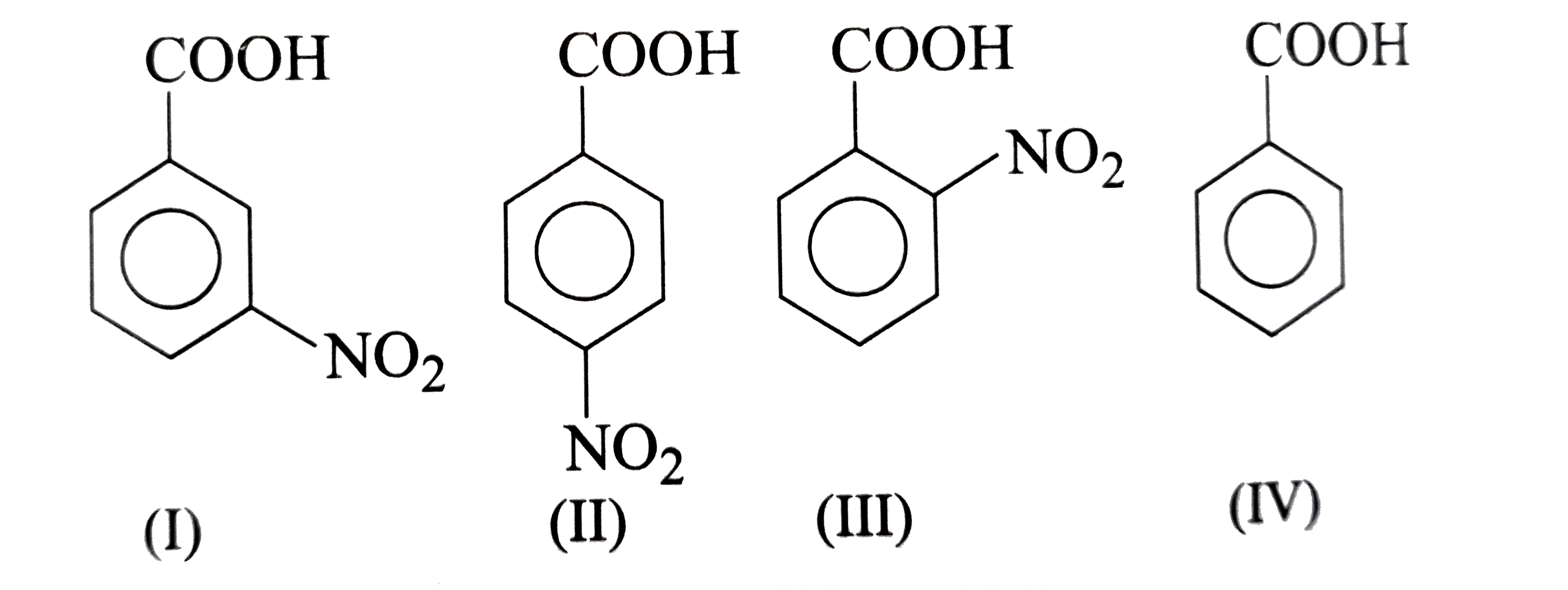
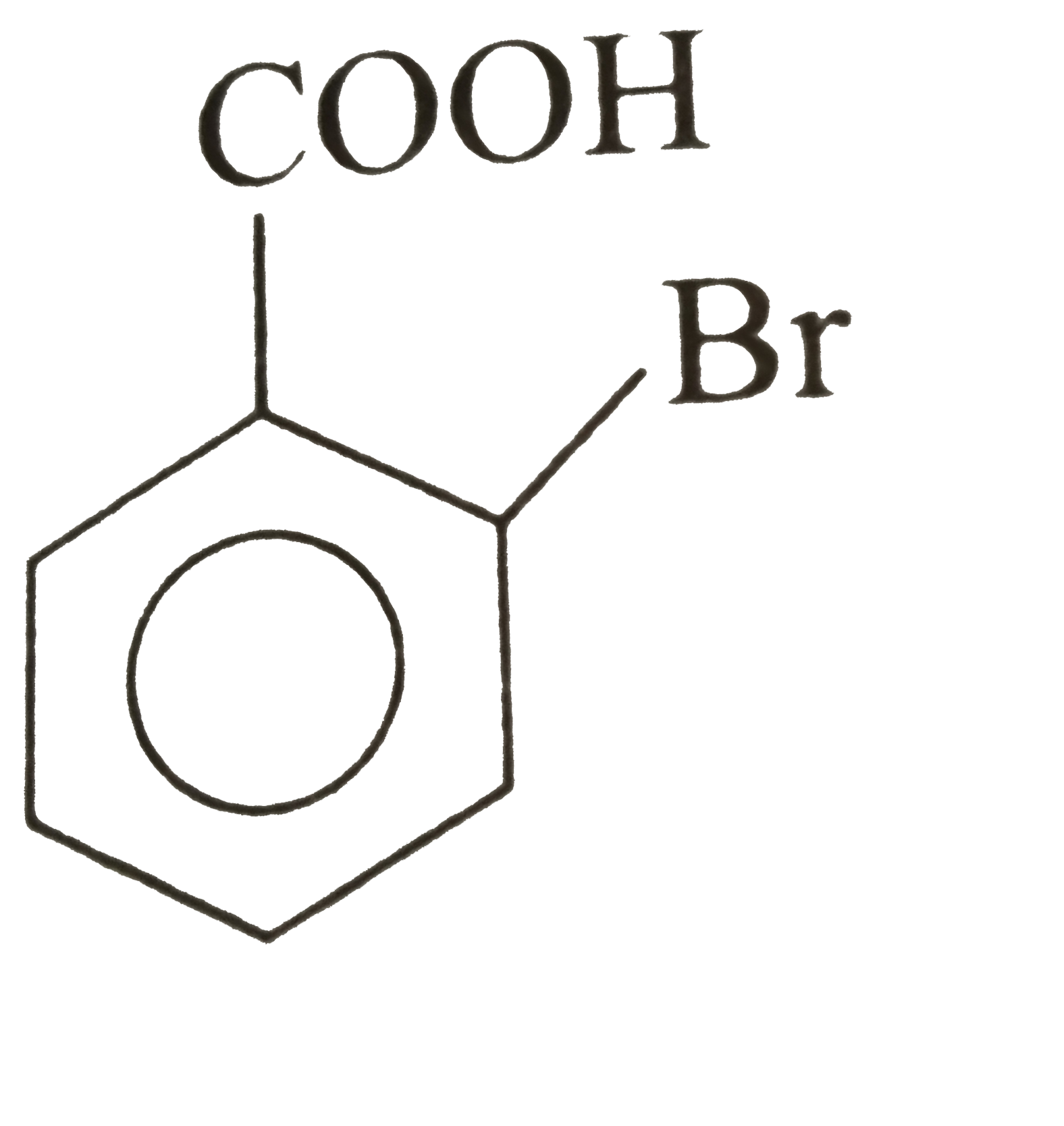
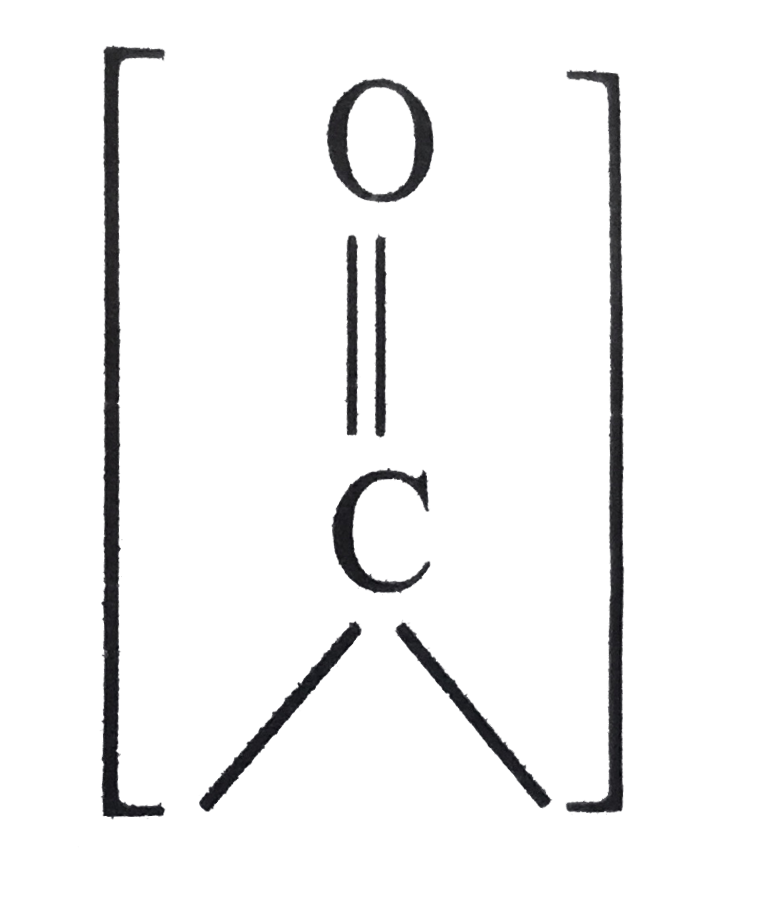 group is greatly reduced.
group is greatly reduced. 

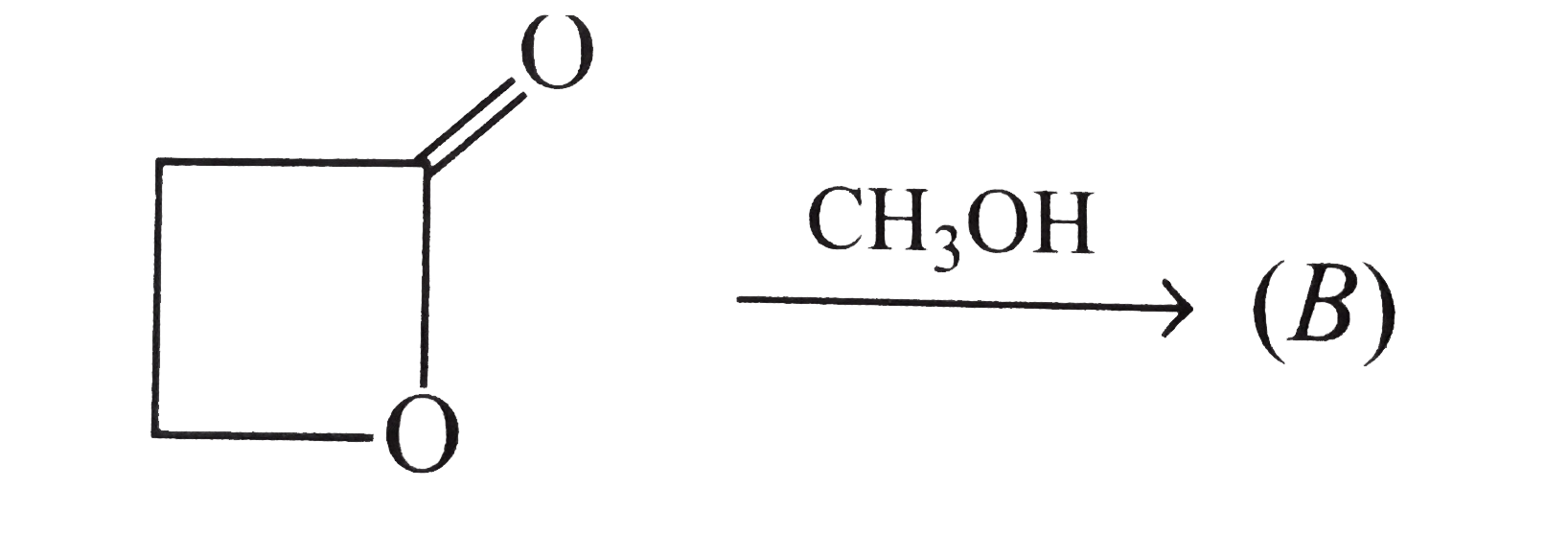



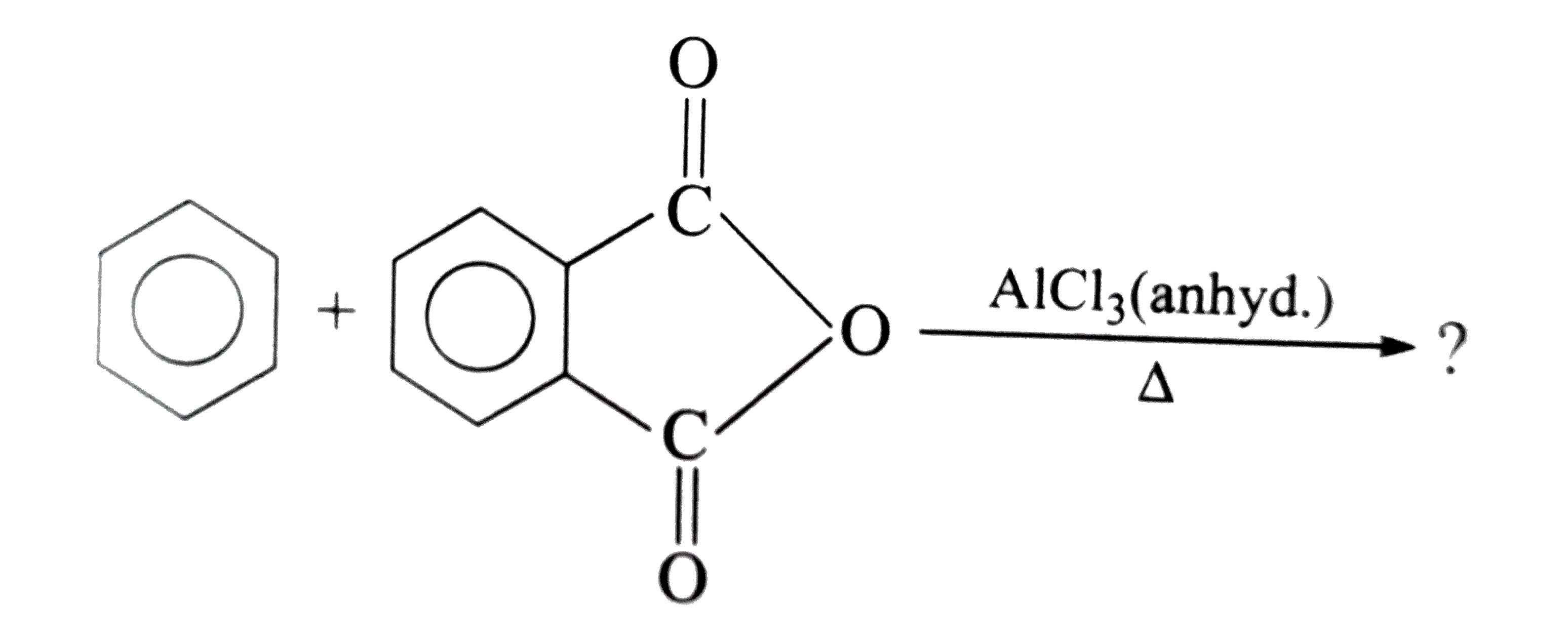



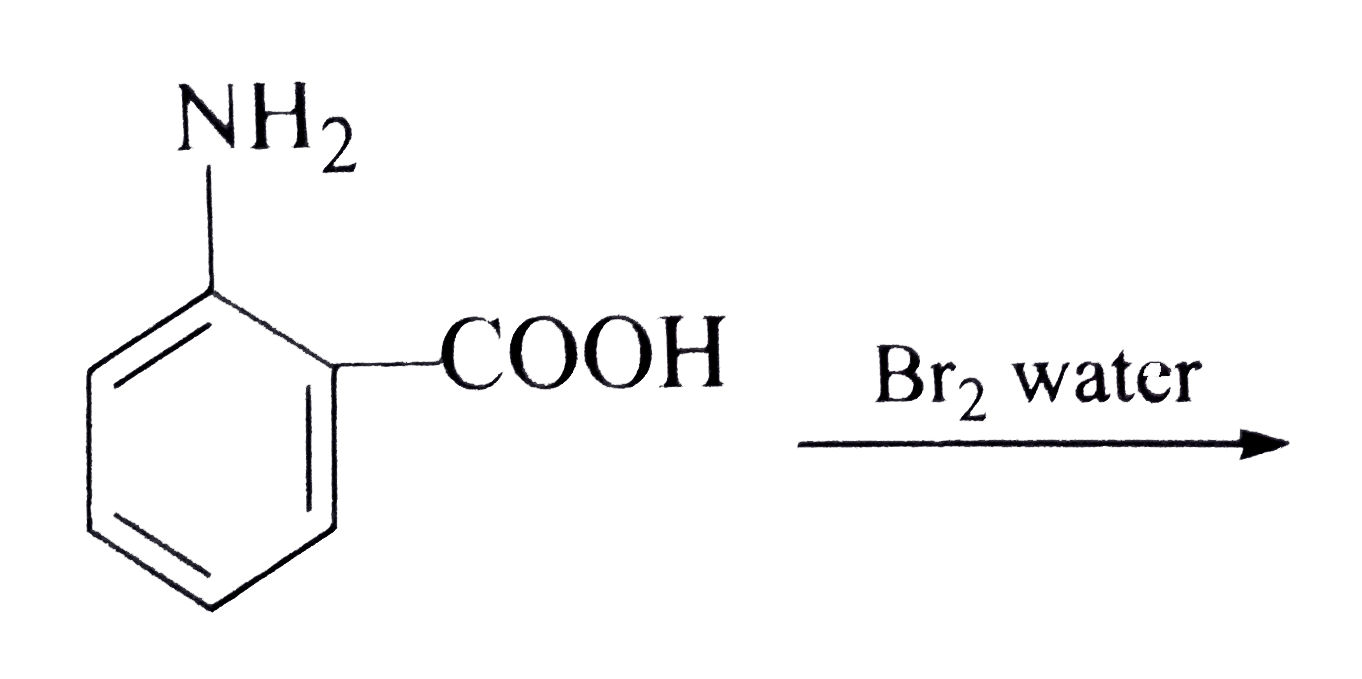

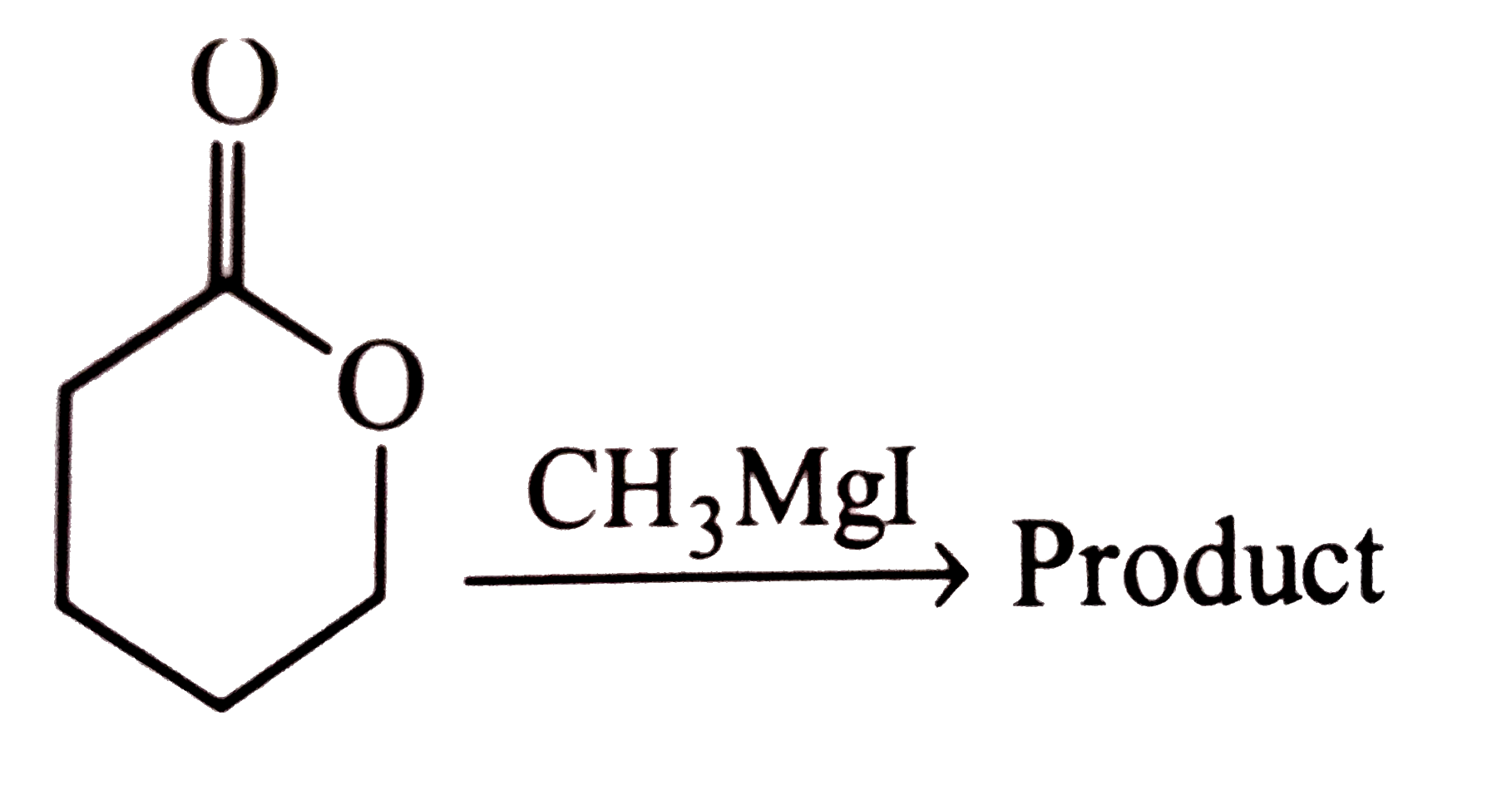



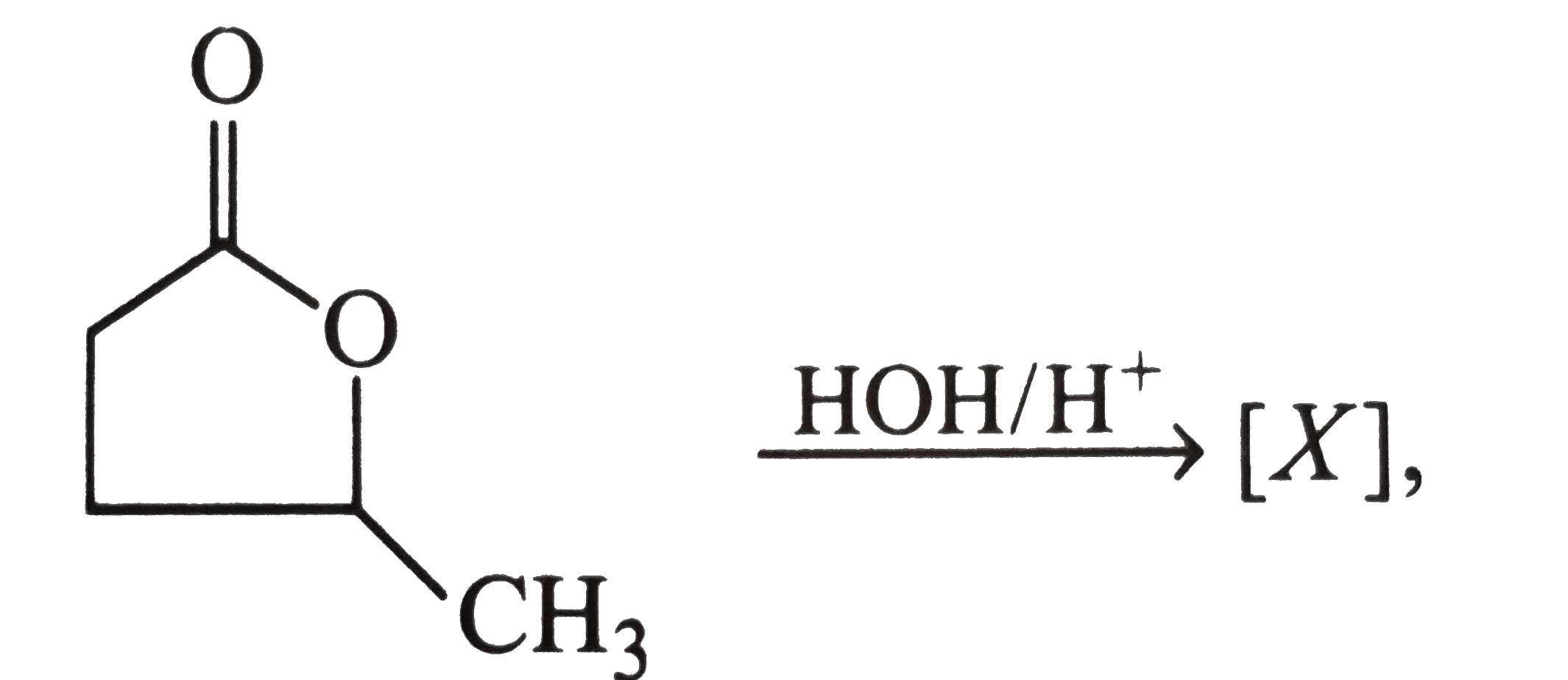
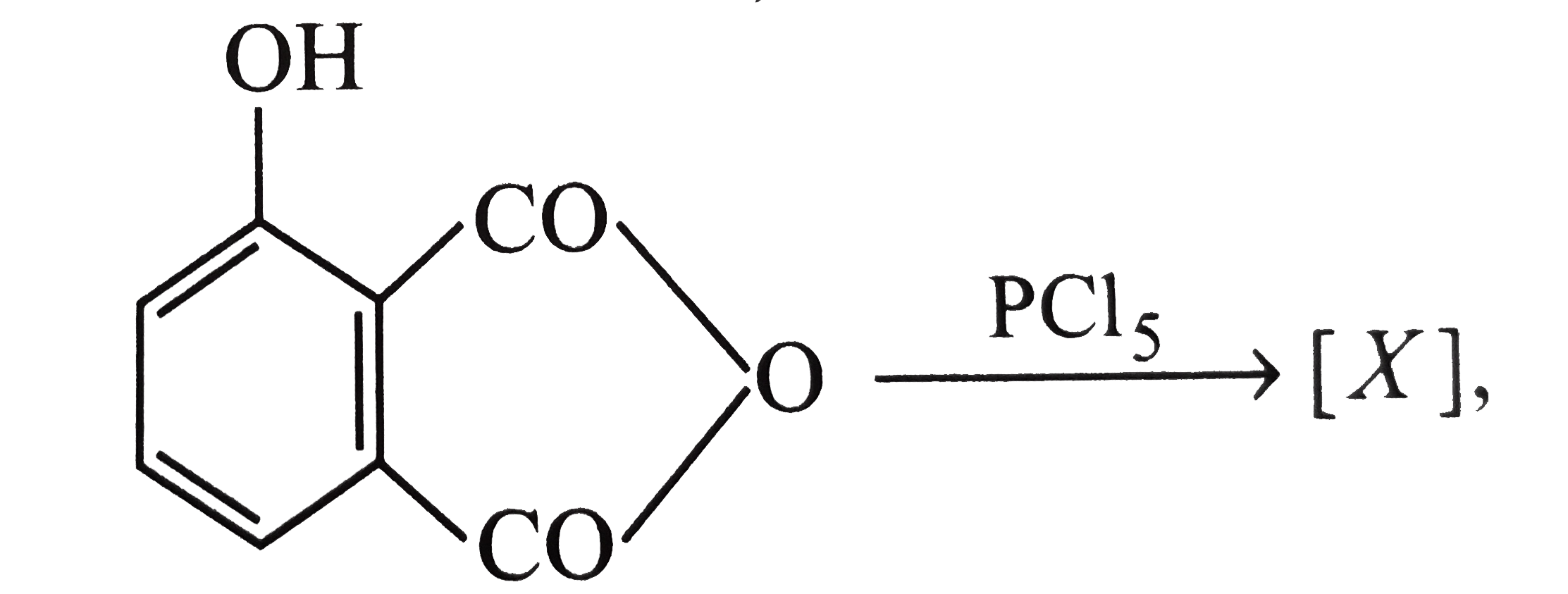
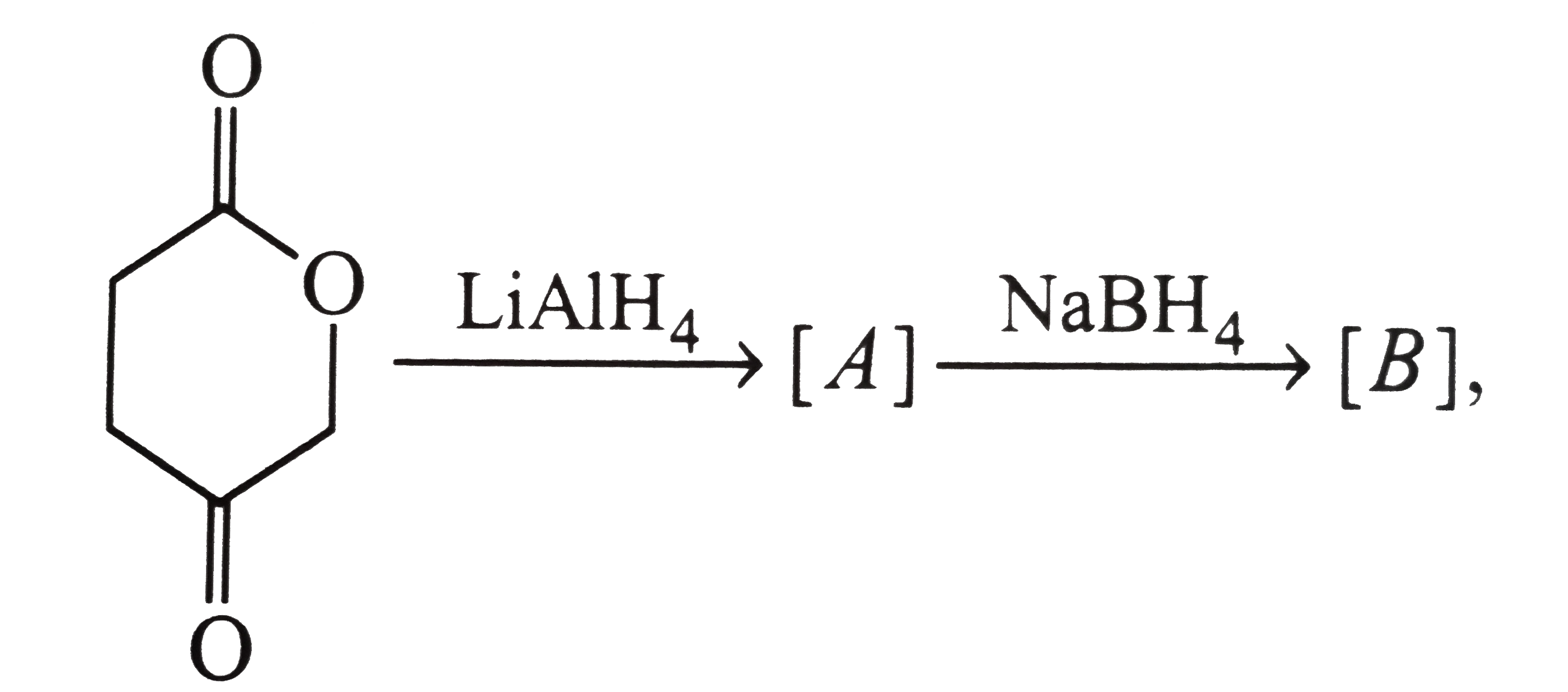
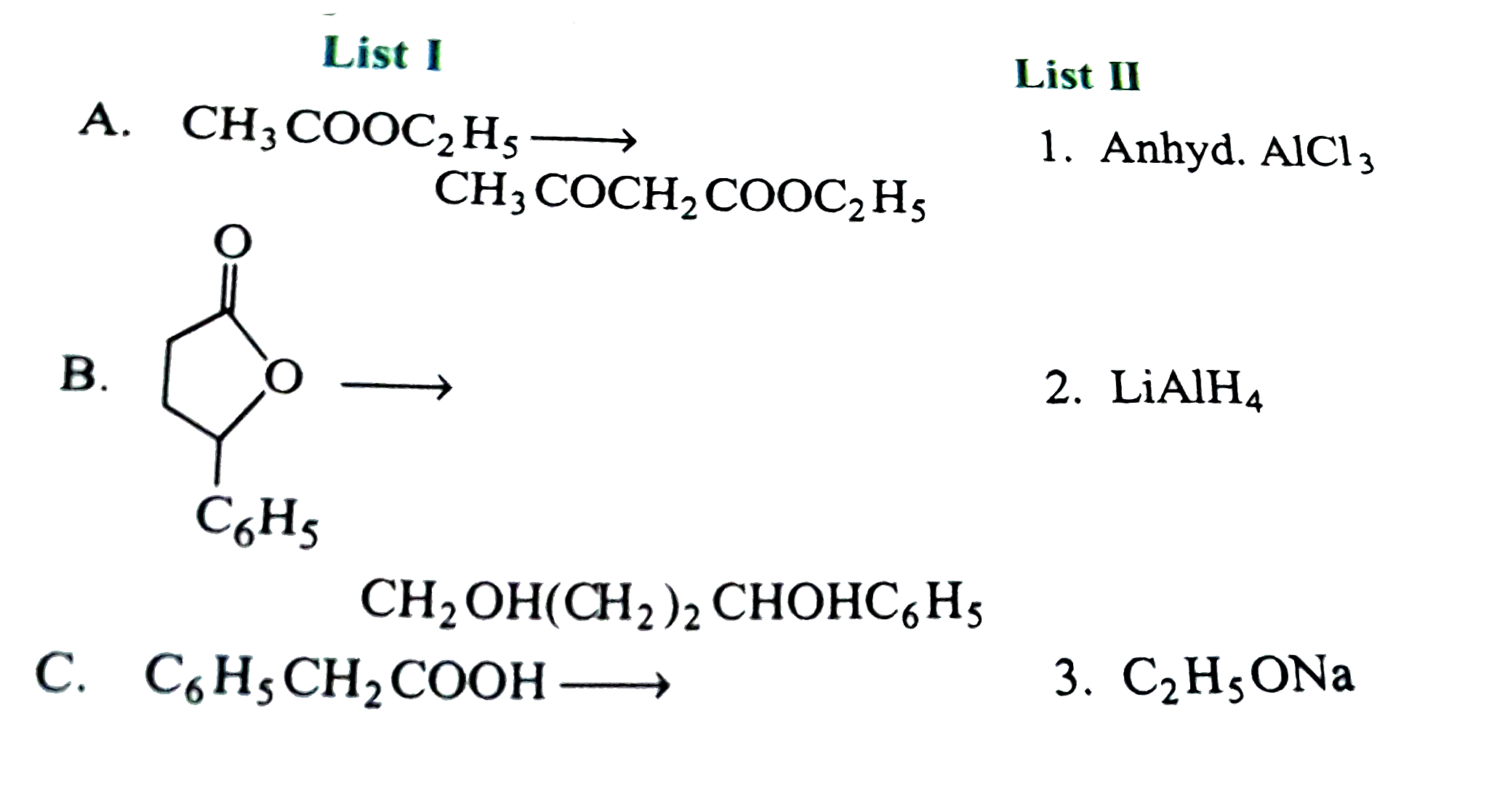

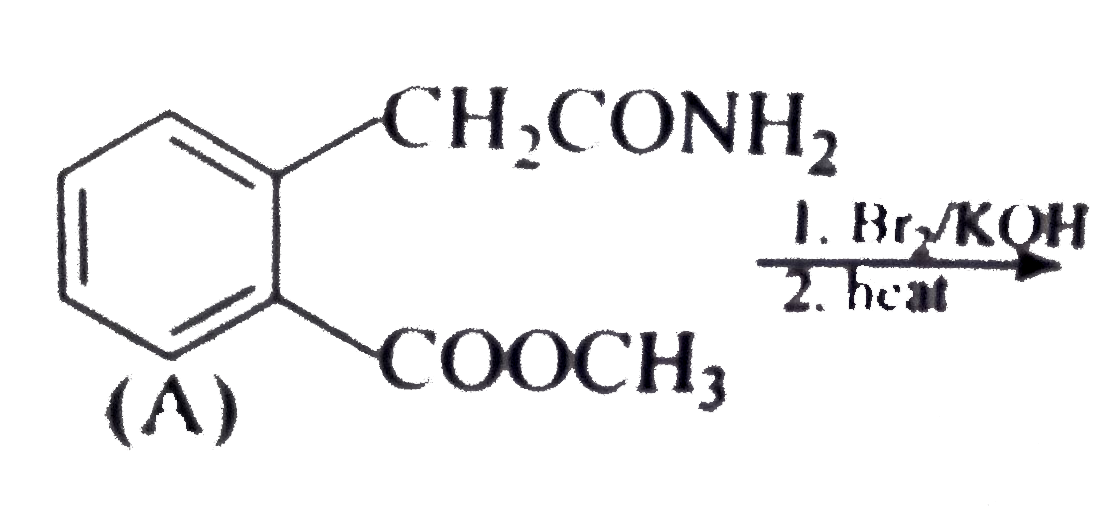
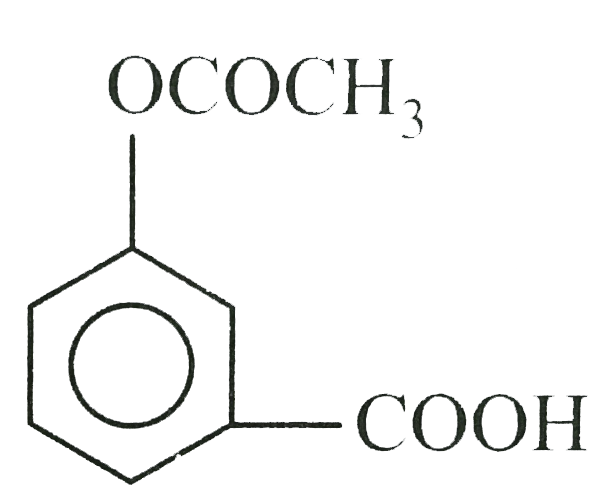
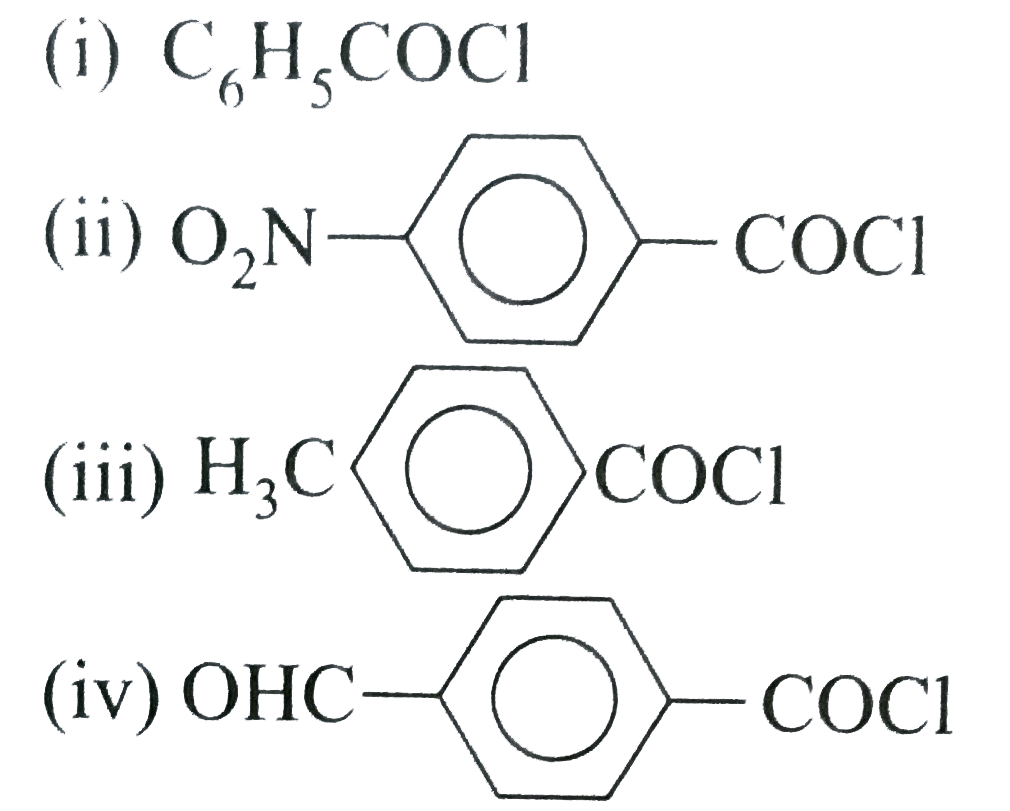

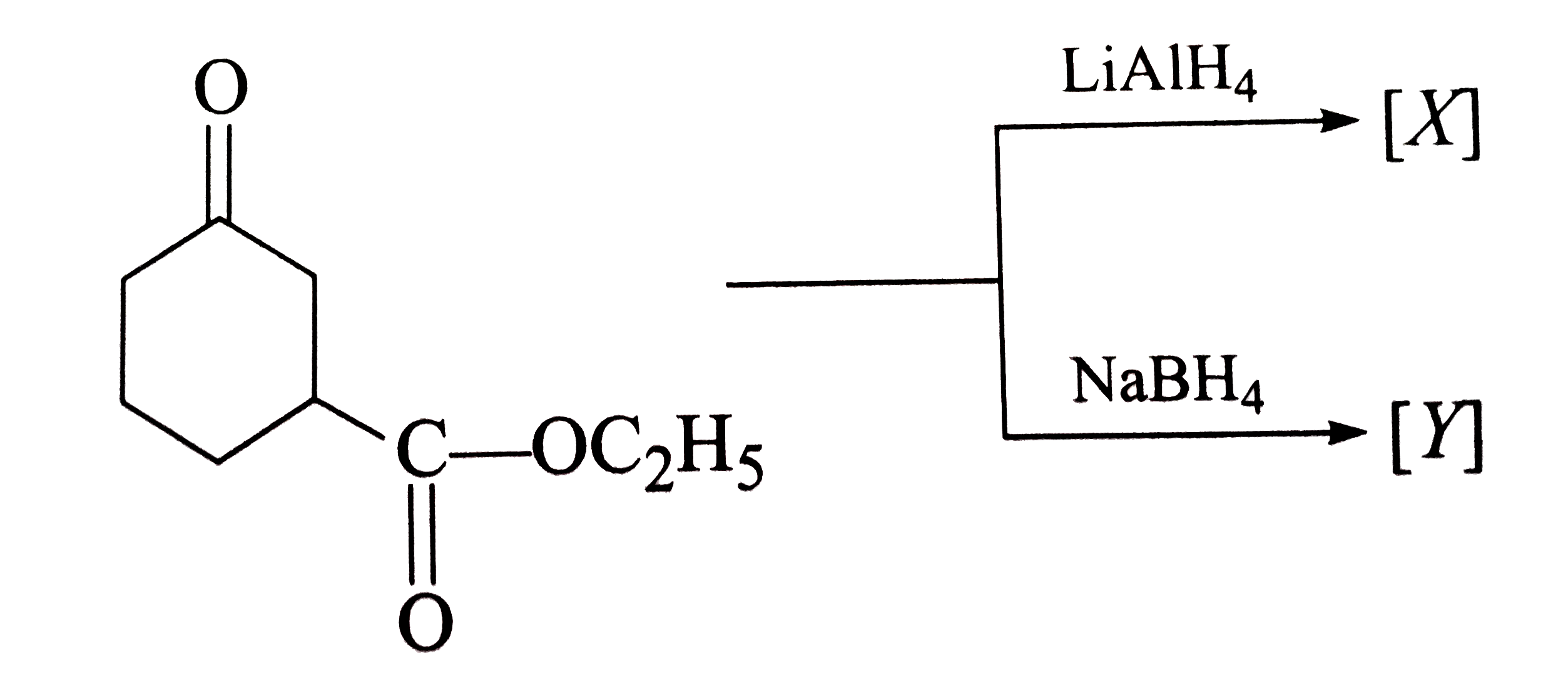


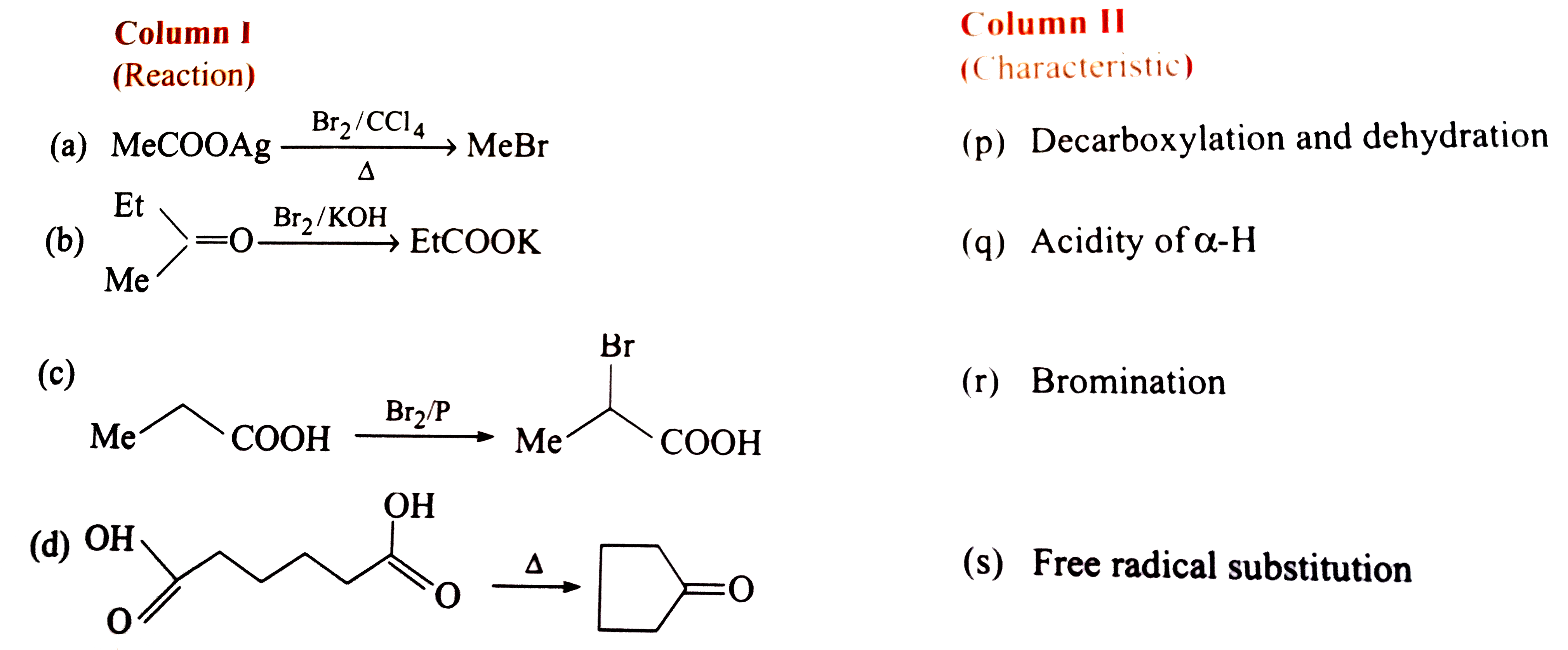

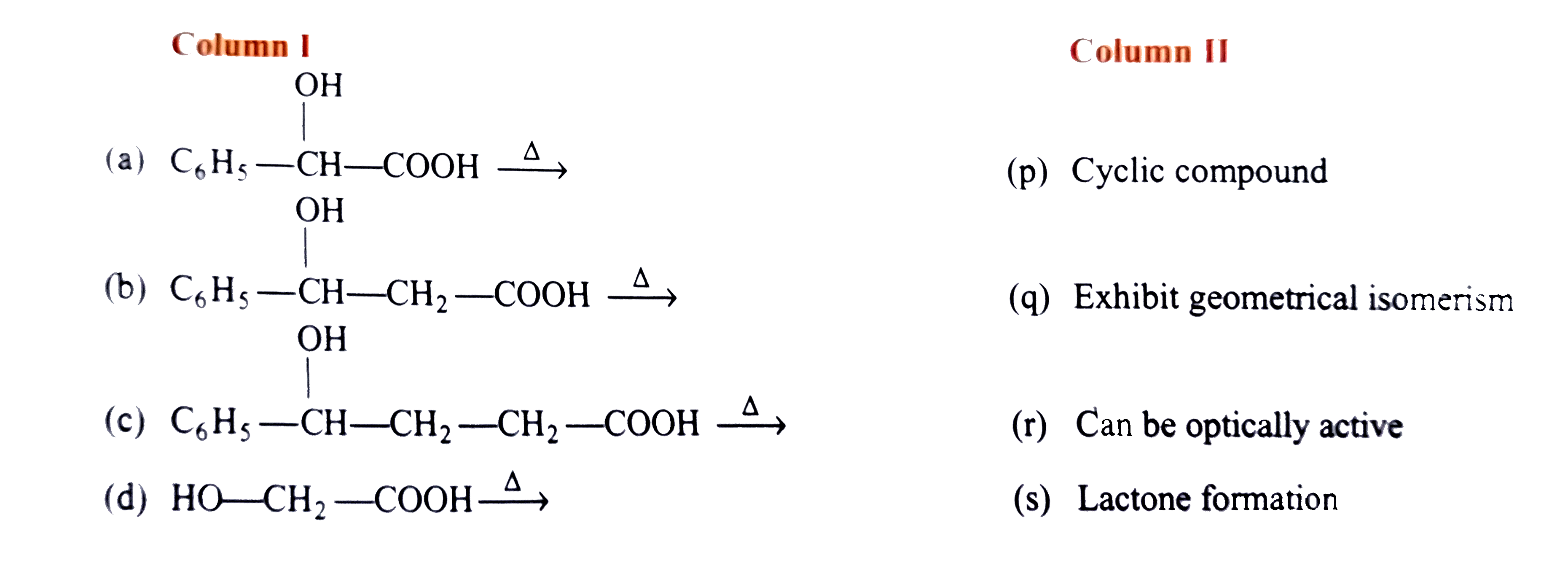


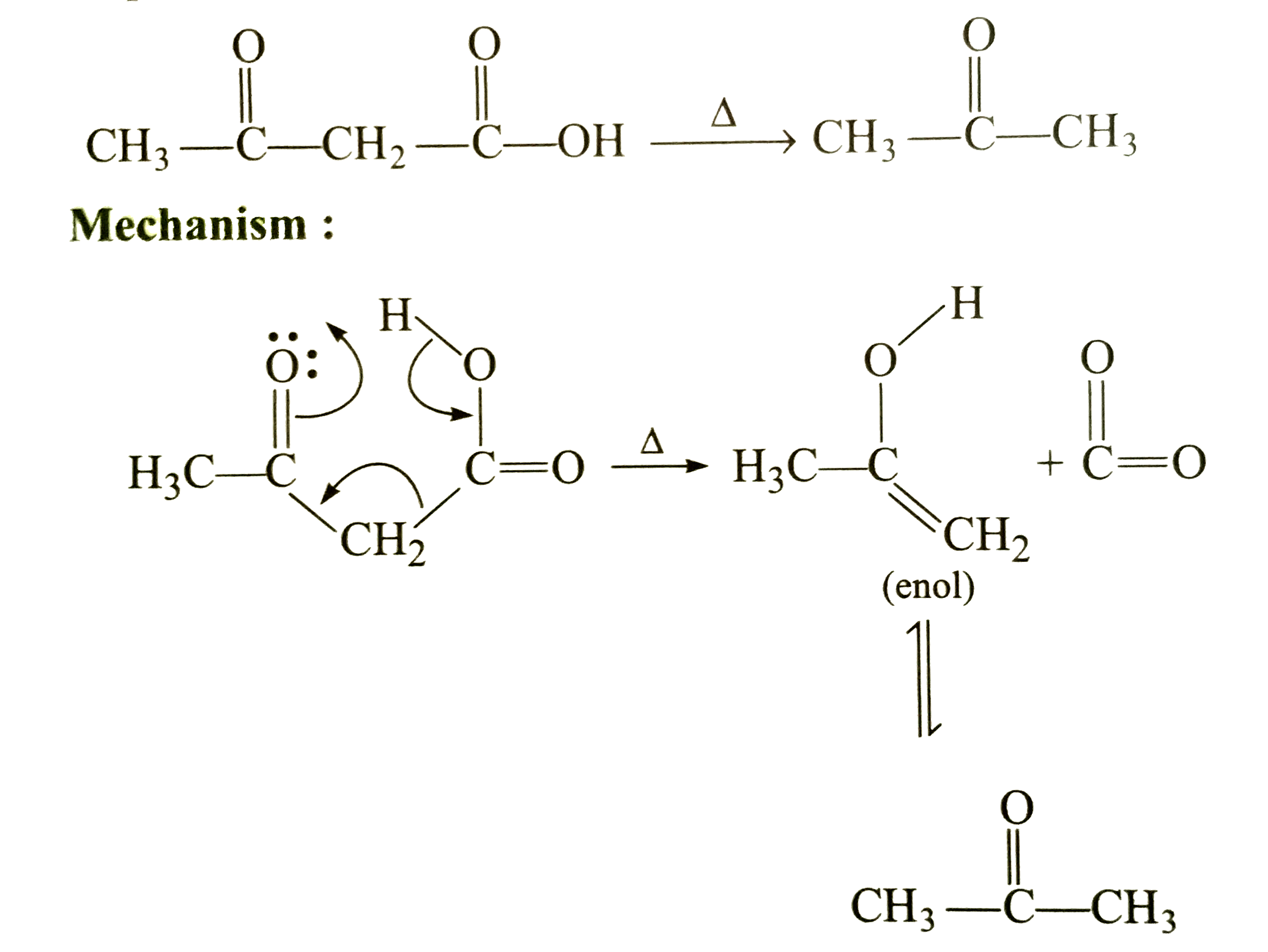
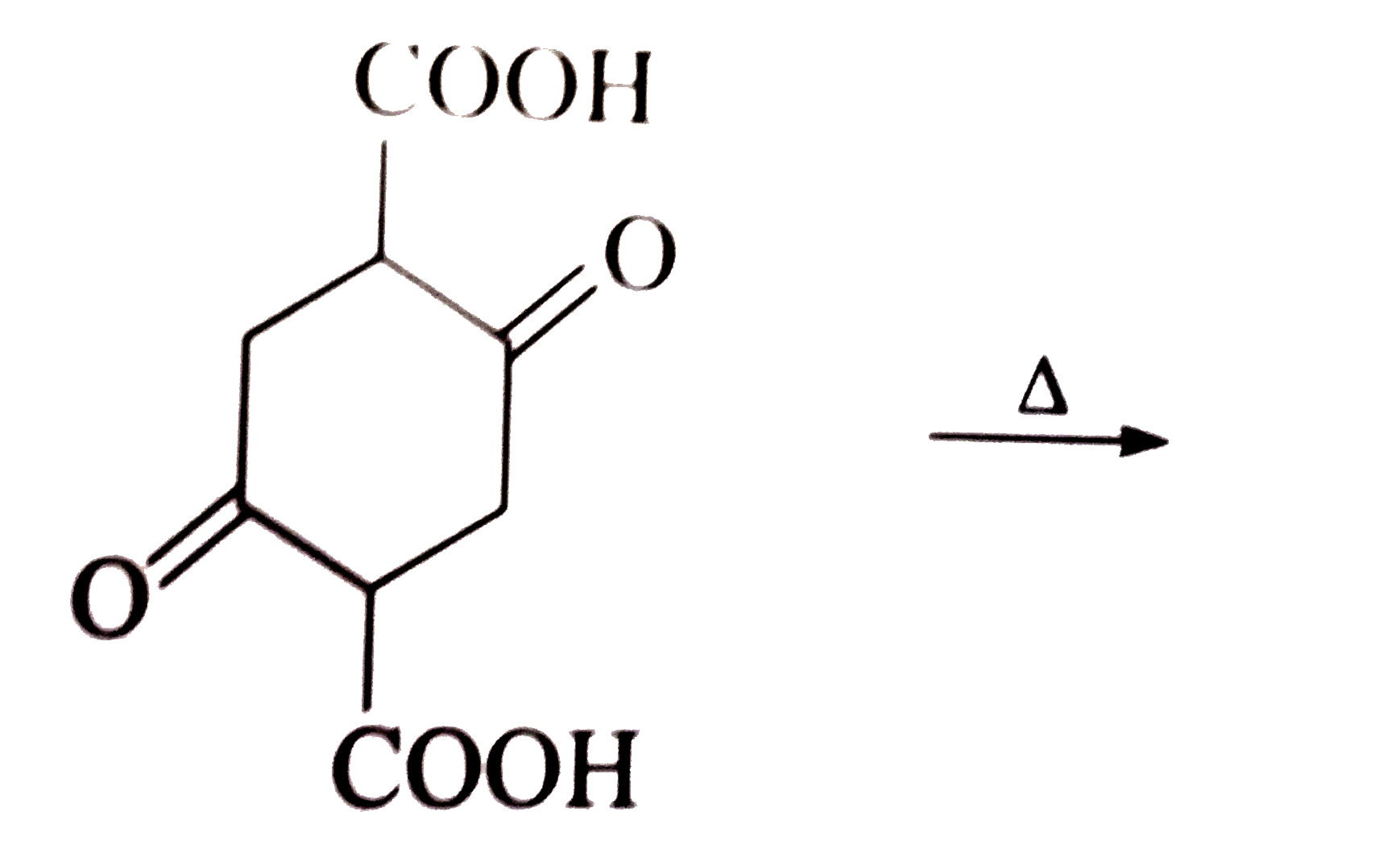
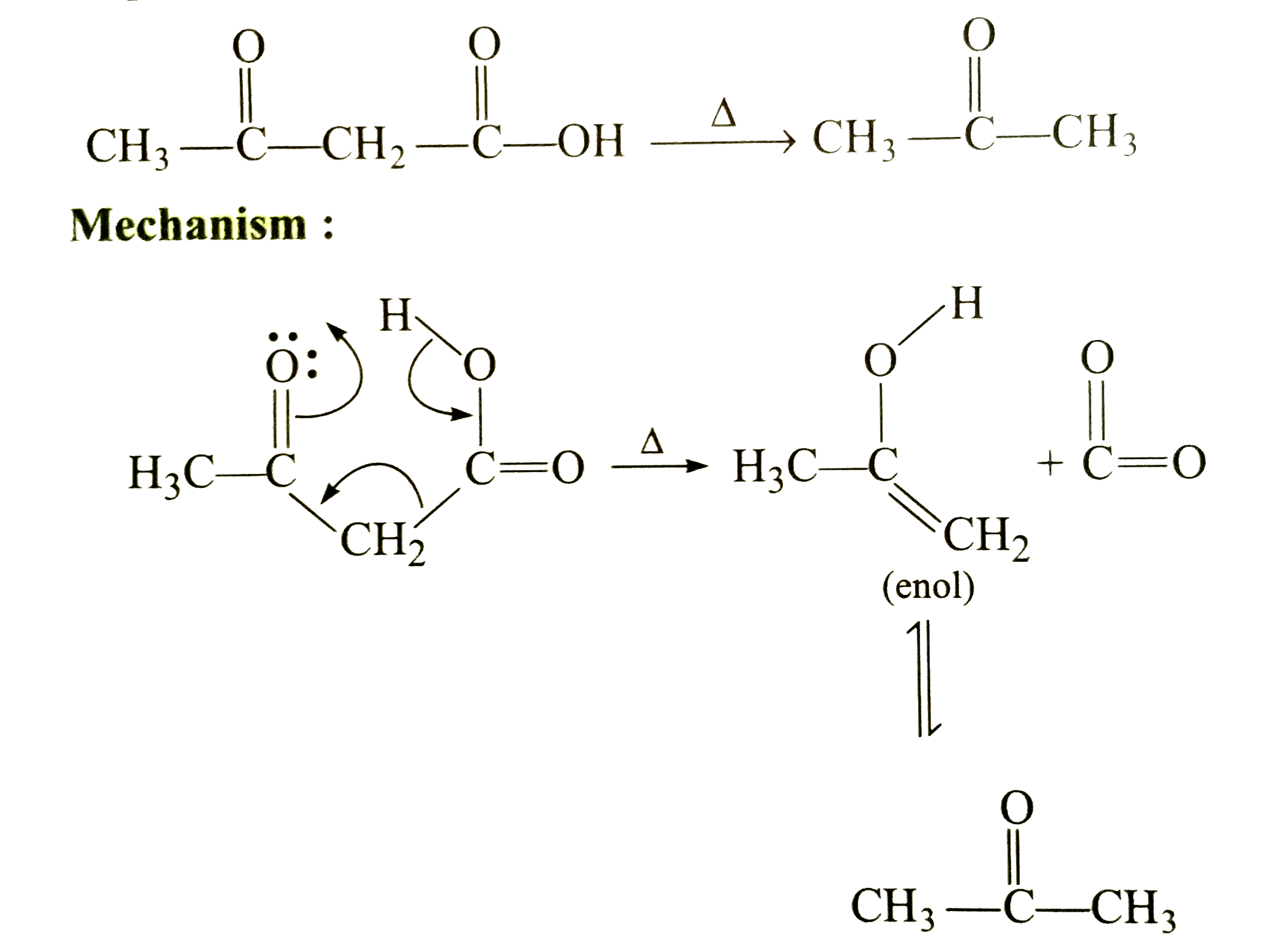
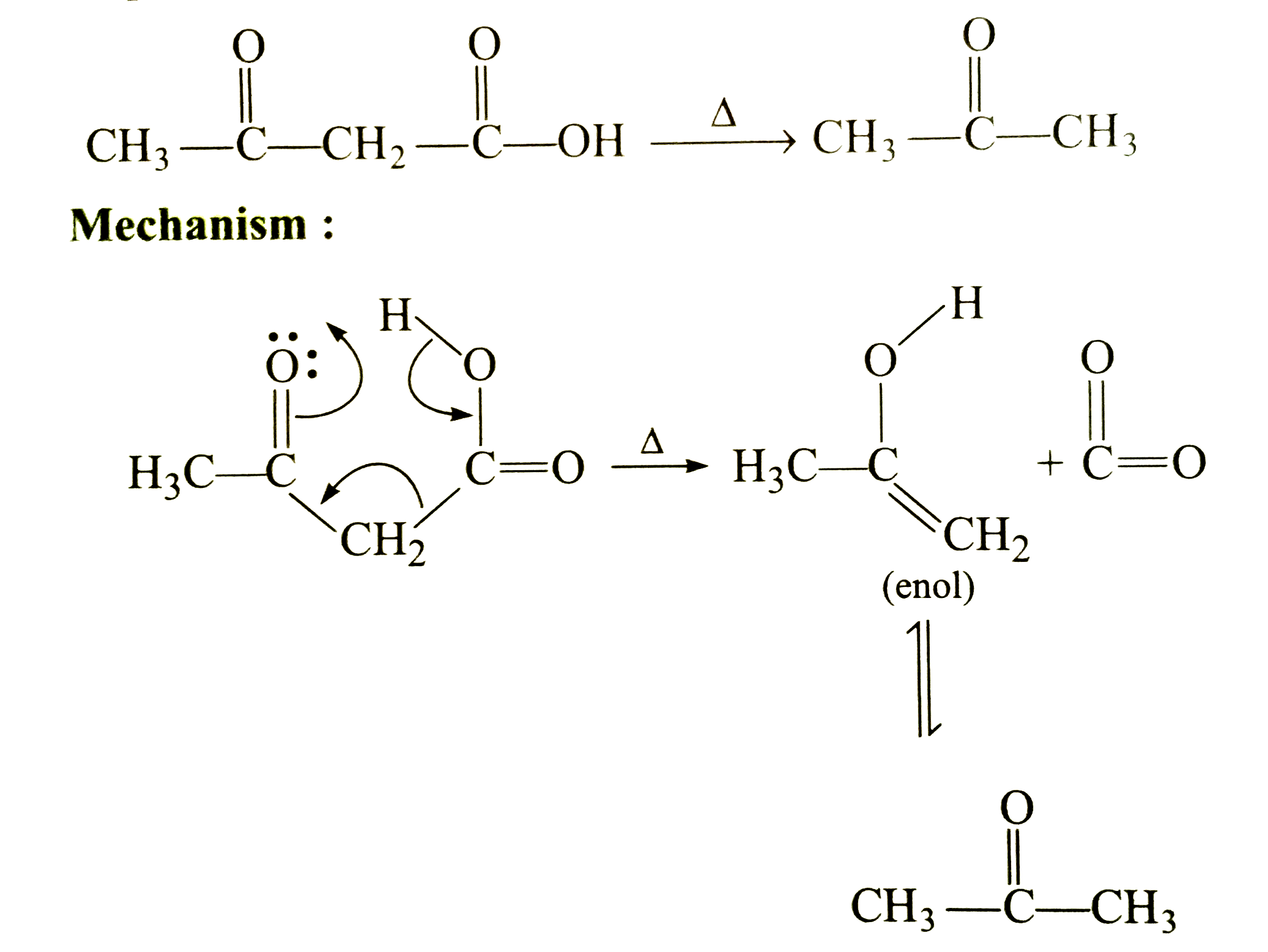
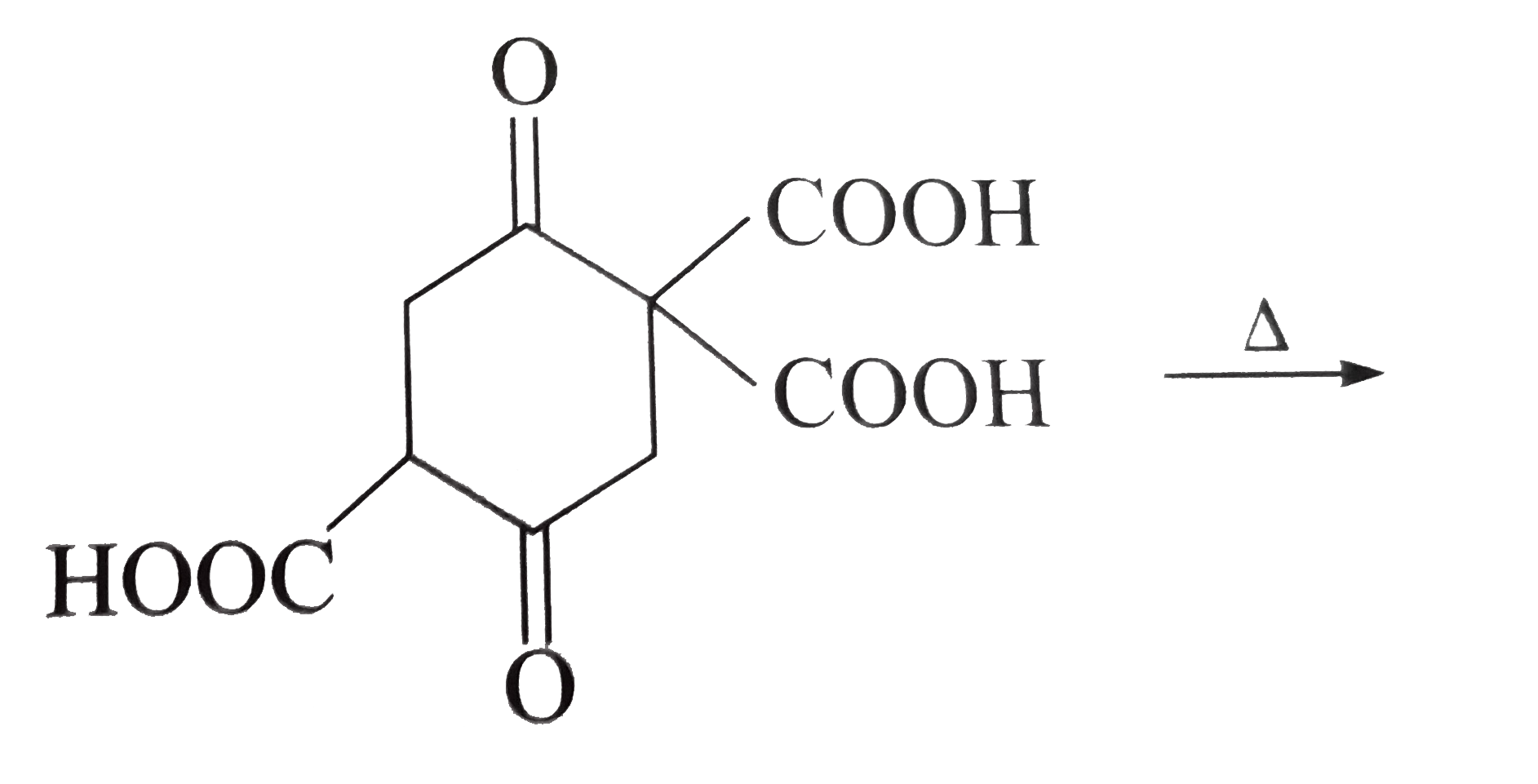
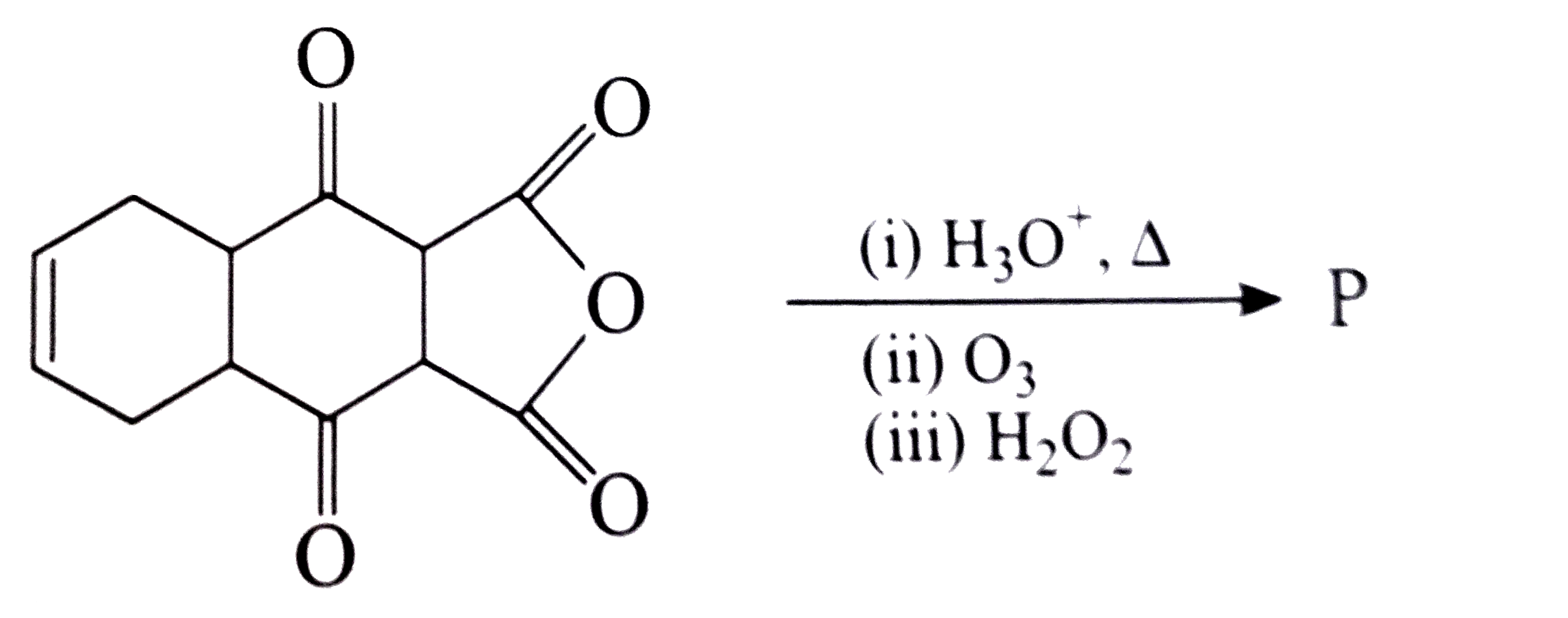
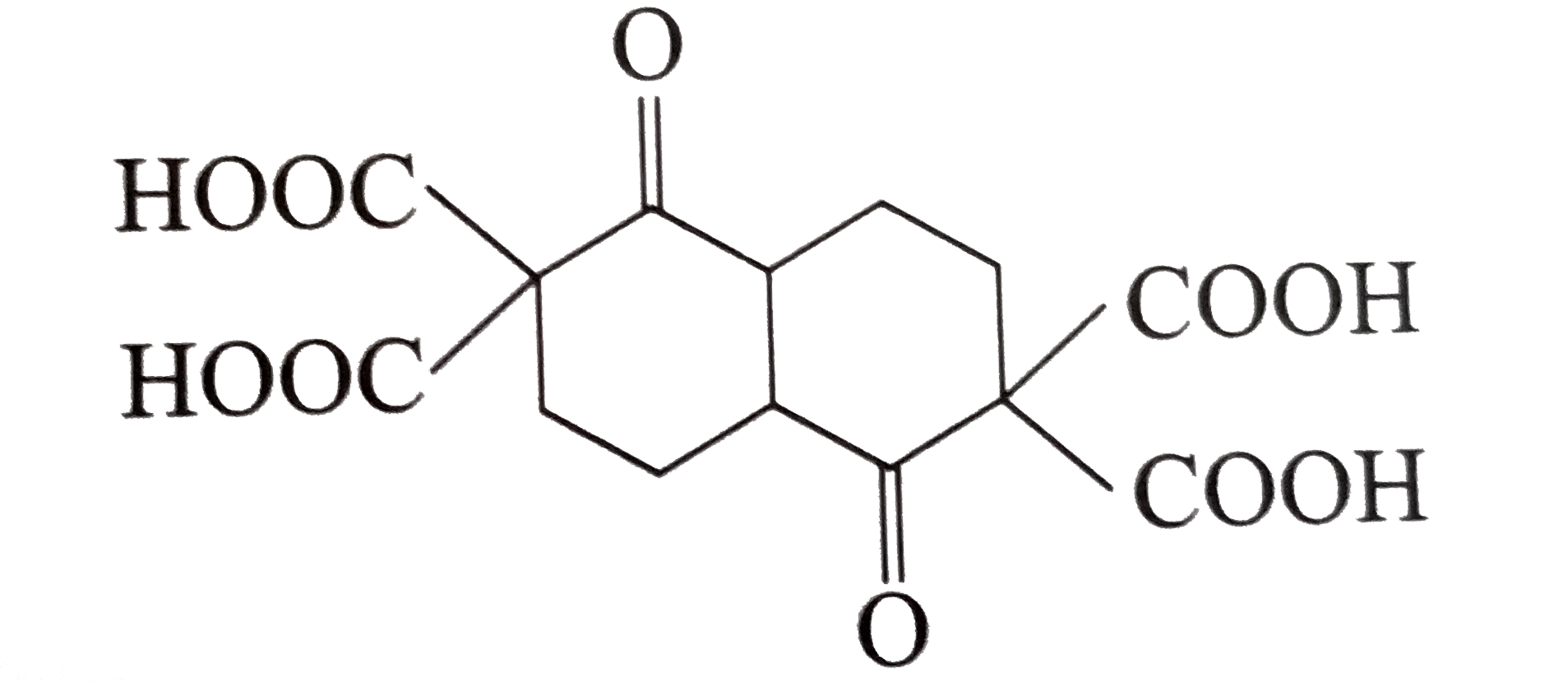
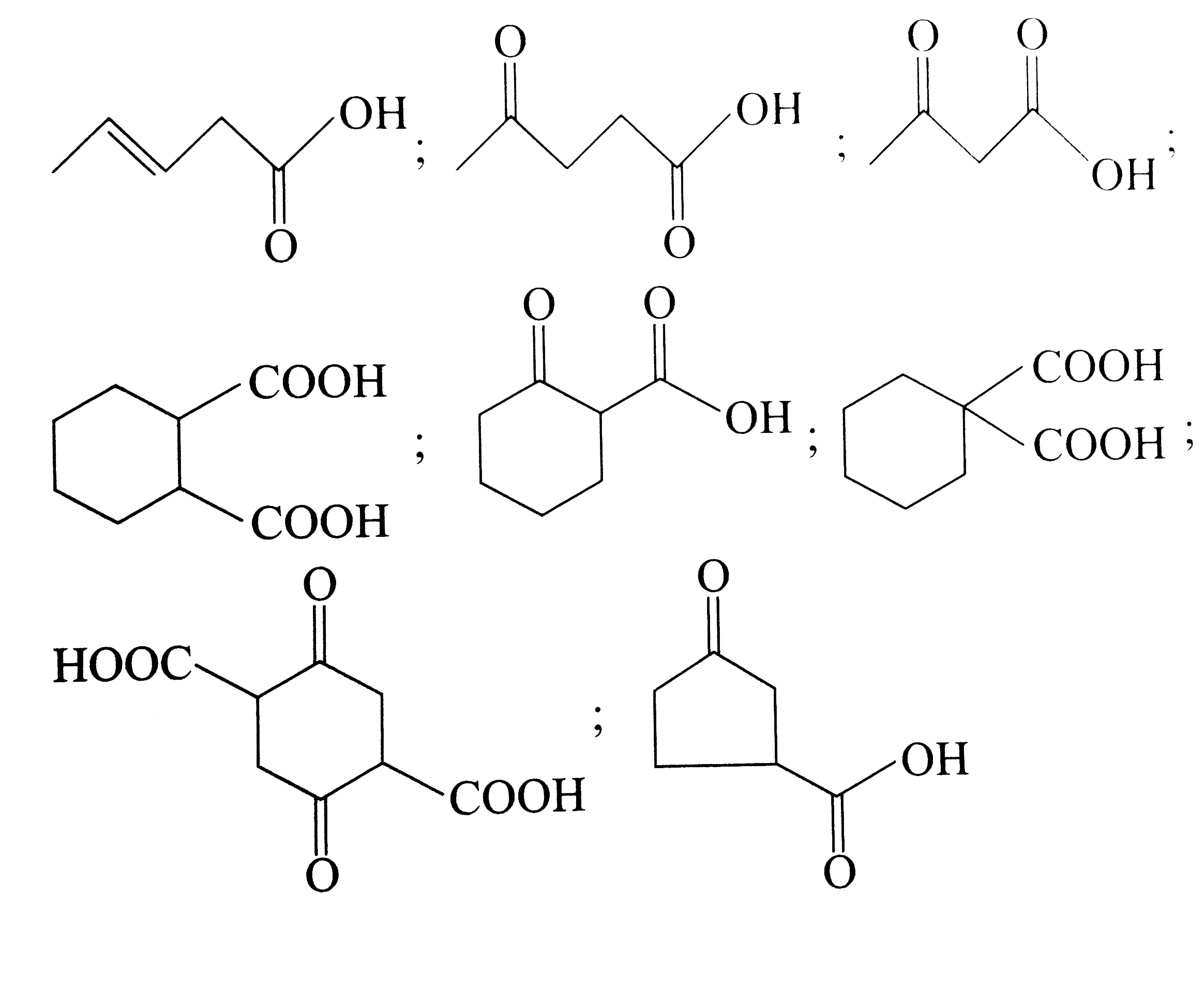
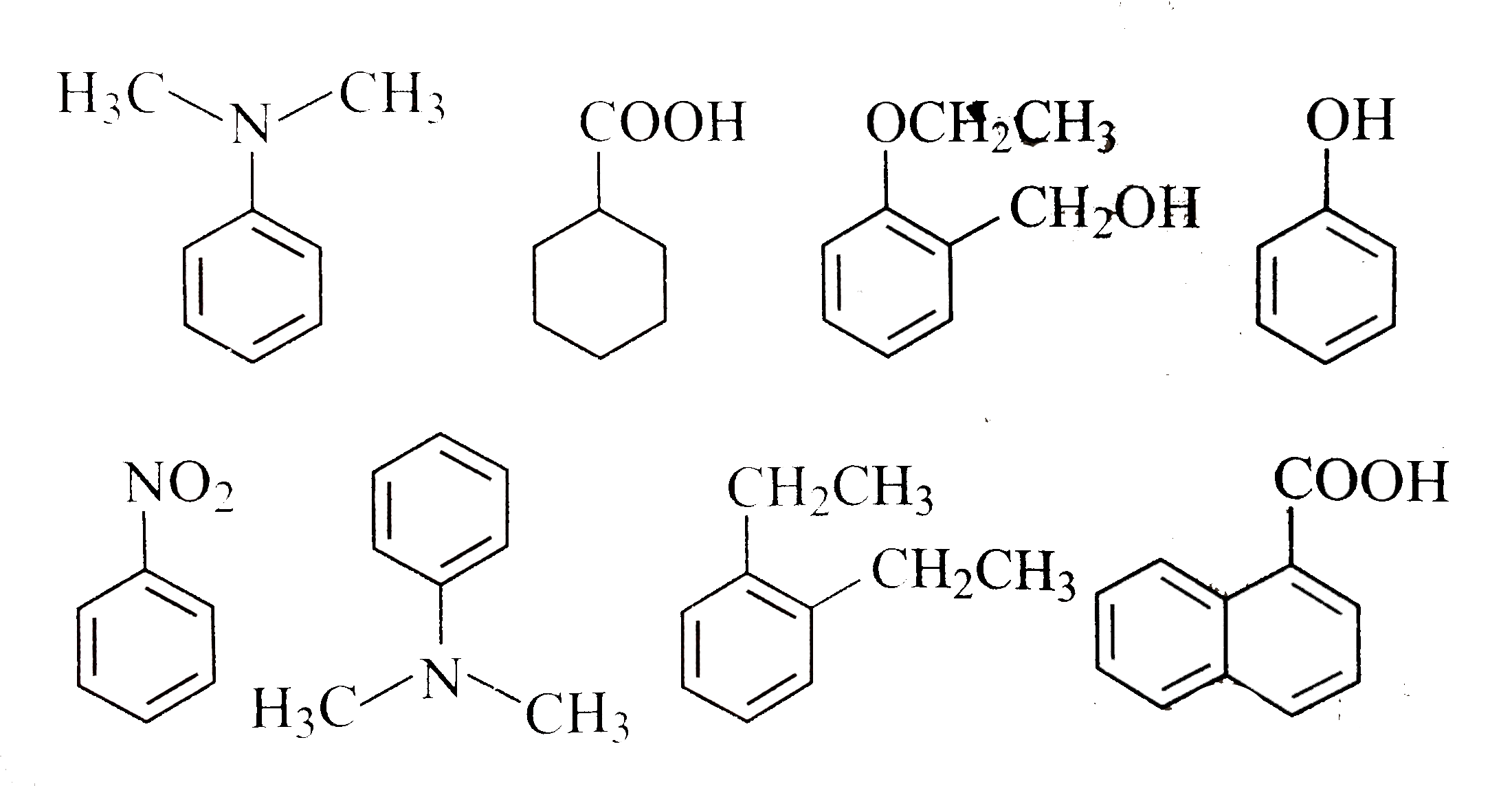 .
.
